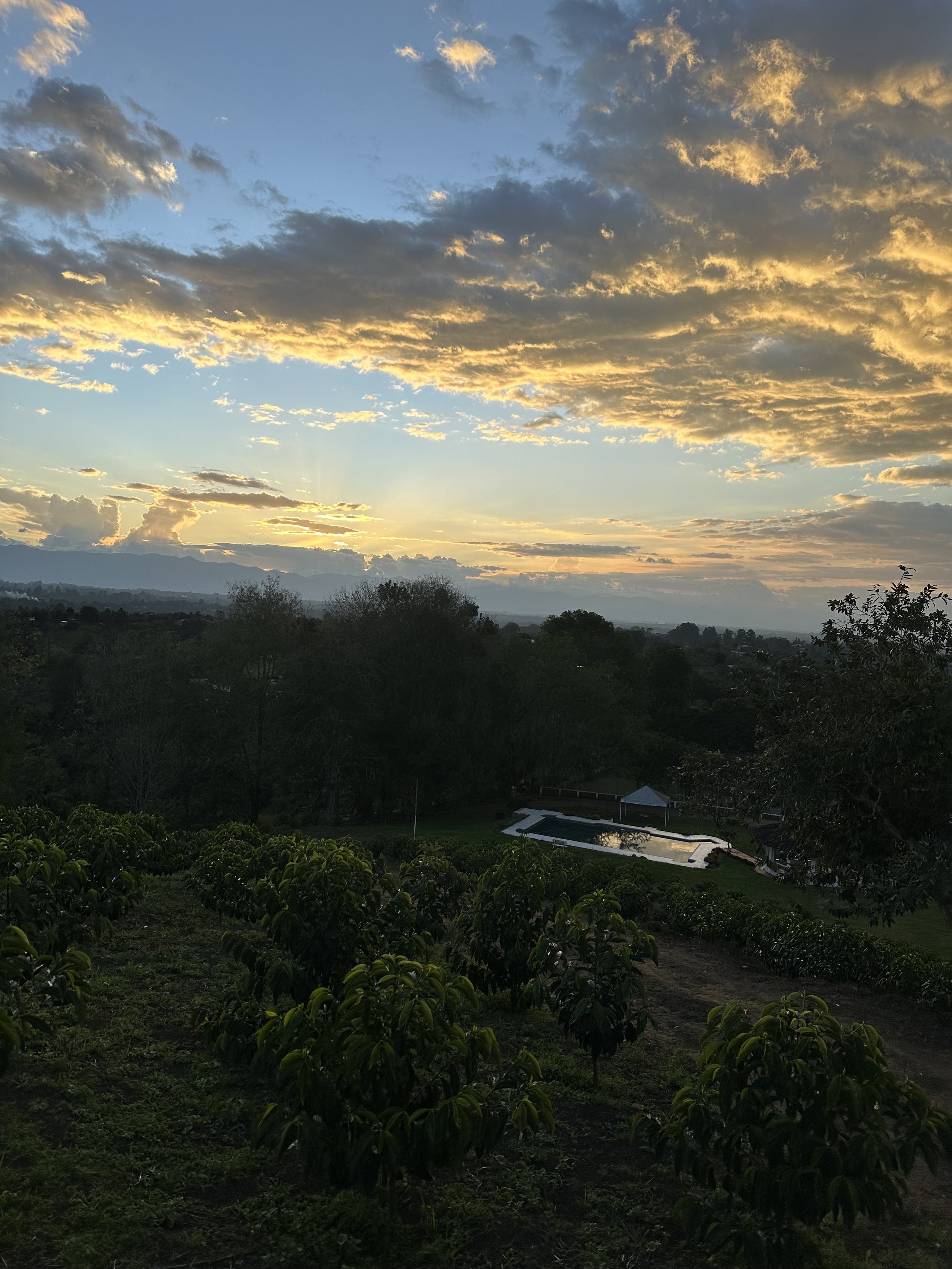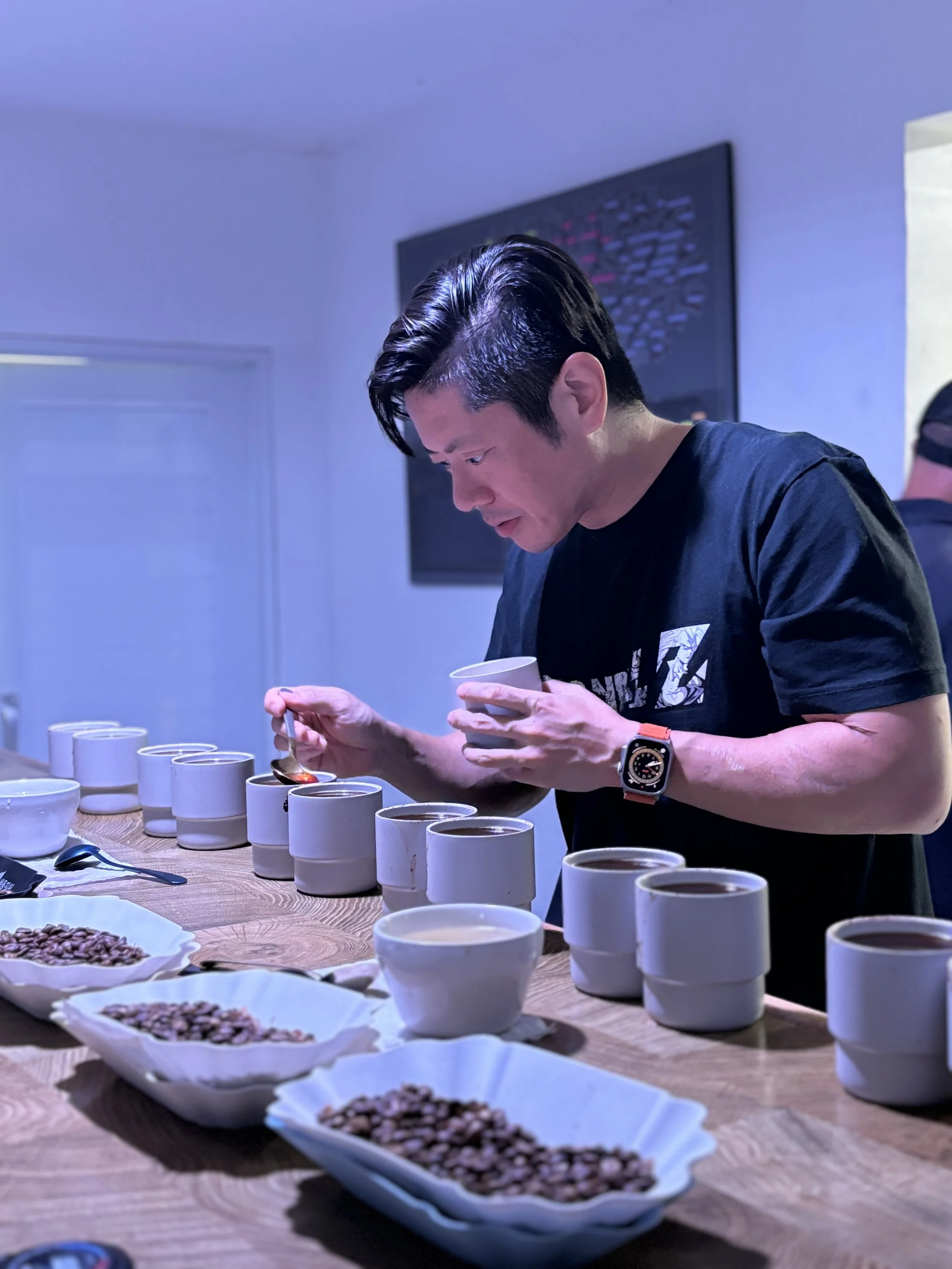Colombia’s Granja Paraiso 92: A coffee lover’s wonderland.
My quest to elevate Philippine coffee led me to Wilton Benitez in Colombia, one of the most innovative minds in the coffee industry. Over the course of two transformative weeks on his farm, I underwent advanced training in coffee farming, processing, and fermentation techniques. Wilton generously shared his vast knowledge, driven by a shared goal of bringing these cutting-edge practices to the Philippines. Together, we hope to uplift local coffee farmers by adding value to Philippine coffee, ensuring that their hard work results in premium, globally recognized beans.
As a lifelong coffee enthusiast, I’ve always dreamed of visiting the farms that produce the world’s finest beans. There’s something magical about walking the same ground where coffee plants thrive, experiencing the process firsthand, and meeting the people who dedicate their lives to crafting the perfect cup. Recently, that dream became a reality when I embarked on a journey from the Philippines to Colombia—home to some of the most innovative coffee practices in the world, and particularly, to the legendary Wilton Benitez.
The Journey to Colombia with a Quick Stopover in Vancouver
Before heading to Colombia, I made a brief stop in Vancouver, Canada, to visit my dad. It had been a while since I returned to the city where I spent most of my teenage years, as my last visit was back in 2013. After a short but meaningful visit, it was time to continue my journey to Colombia.
I’ll admit, I was a bit nervous about traveling to Colombia. Every time my son and I searched online, we came across Canadian government travel advisories urging visitors to “exercise a high degree of caution.” However, my actual experience in Colombia was the complete opposite, people were warm, welcoming, and very freindly.
Colombia has always been one of the world’s coffee powerhouses, and its reputation for producing unique, high-quality beans is second to none. My destination was Granja Paraiso 92, the renowned farm of Wilton Benitez, nestled in the mountainous region of Cauca. Wilton is a name that resonates deeply within the specialty coffee world, known for his innovative processing techniques that have earned him a place as one of the industry’s standout figures and once you get to know him, one of the kindest people in coffee I’ve met.
The trip itself had four legs: the first was a six-hour flight from Vancouver to Houston, followed by a five-hour layover. The second leg was a four-hour flight to Bogotá, Colombia, and from there, a quick 30-minute flight to Popayán, a small town. Wilton’s friend and business partner, Oscar, picked me up at the airport for a scenic two-hour drive to Granja Paraiso 92.
Oscar and his Daughter Samatha
Arriving at Granja Paraiso92
After a few connecting flights and a scenic drive through Colombia’s lush landscapes, I finally arrived at Wilton’s farm. The moment I stepped onto the rich, volcanic soil, I could feel the energy of the place. It was a perfect balance of nature’s beauty and human ingenuity. The cool breeze, the smell of coffee plants and fermenting coffee cherries in the air ( smells like a mix of haw flakes and cascara), and the breathtaking view of the mountains made me feel like I had stepped into a coffee lover’s wonderland.
Wilton greeted me with the warmth and hospitality like I was part of the family. He immediately began to explain the intricacies of his work—the careful selection of varietals, the importance of terroir, and his experimental processing methods. His passion was infectious, and it wasn’t long before I was completely immersed in his world.
Granja Paraiso92
Granja Paraiso92 is actually part of the Varietales Finos company, which is co-owned by Wilton Benitez and brothers Oscar and Darwin Risacos. Varietales Finos oversees both Granja Paraiso 92 and Granja La Macarena, with a combined land area of over 120 hectares. These farms boast an impressive collection of more than 32 different exotic varietals, including Ethiopian Landraces, Gesha, Sudan Rume, Pink Bourbon, Moka, and Eugenioides.
I jokingly mentioned to Wilton that his vision seems to be collecting these varietals like Pokémon. Jokes aside, the sheer diversity of varietals cultivated on these farms reflects their deep commitment to innovation and excellence in coffee production. Each varietal is carefully nurtured to bring out its unique characteristics, contributing to Colombia’s reputation for producing some of the finest and most sought-after coffees in the world.
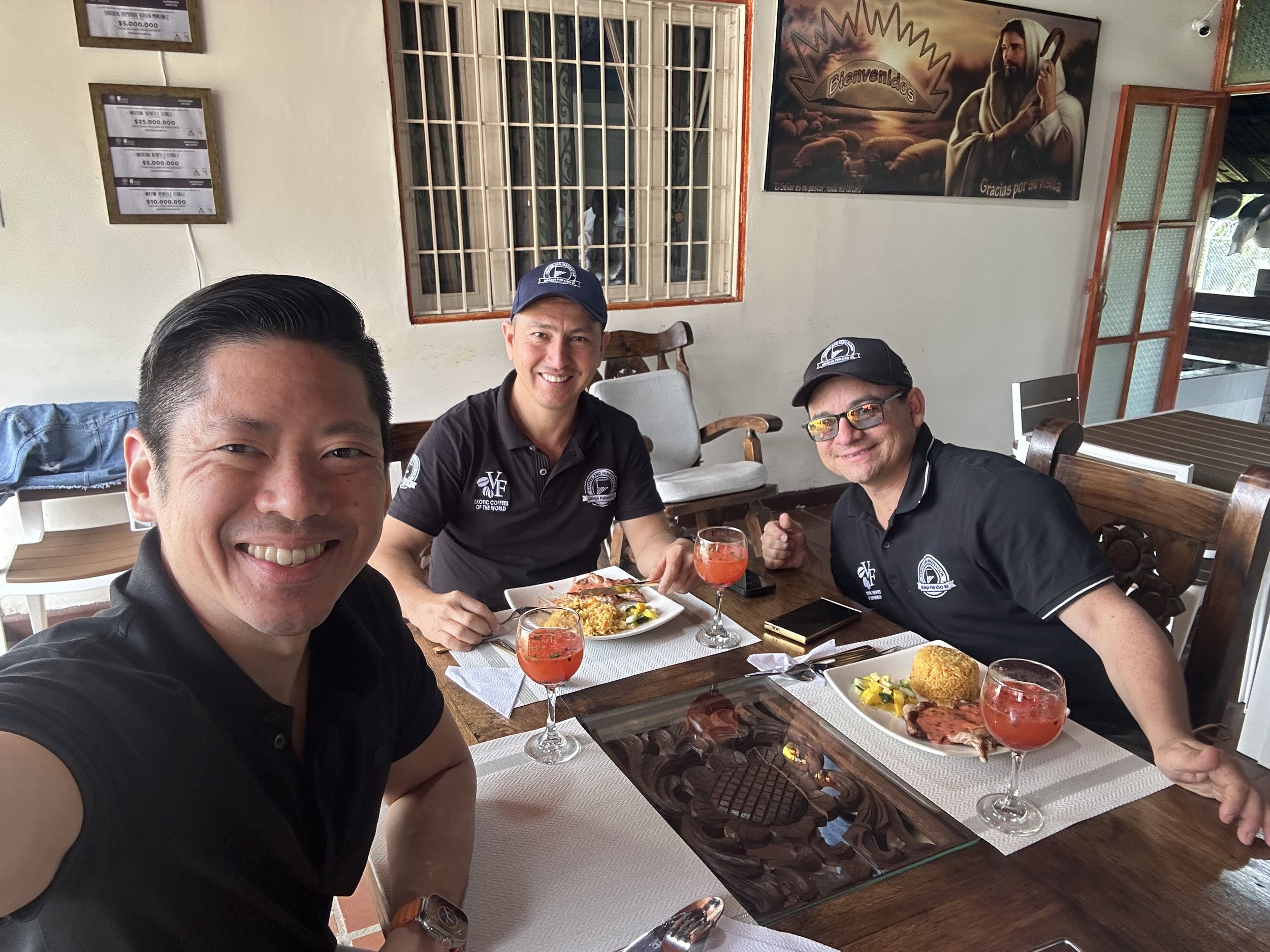
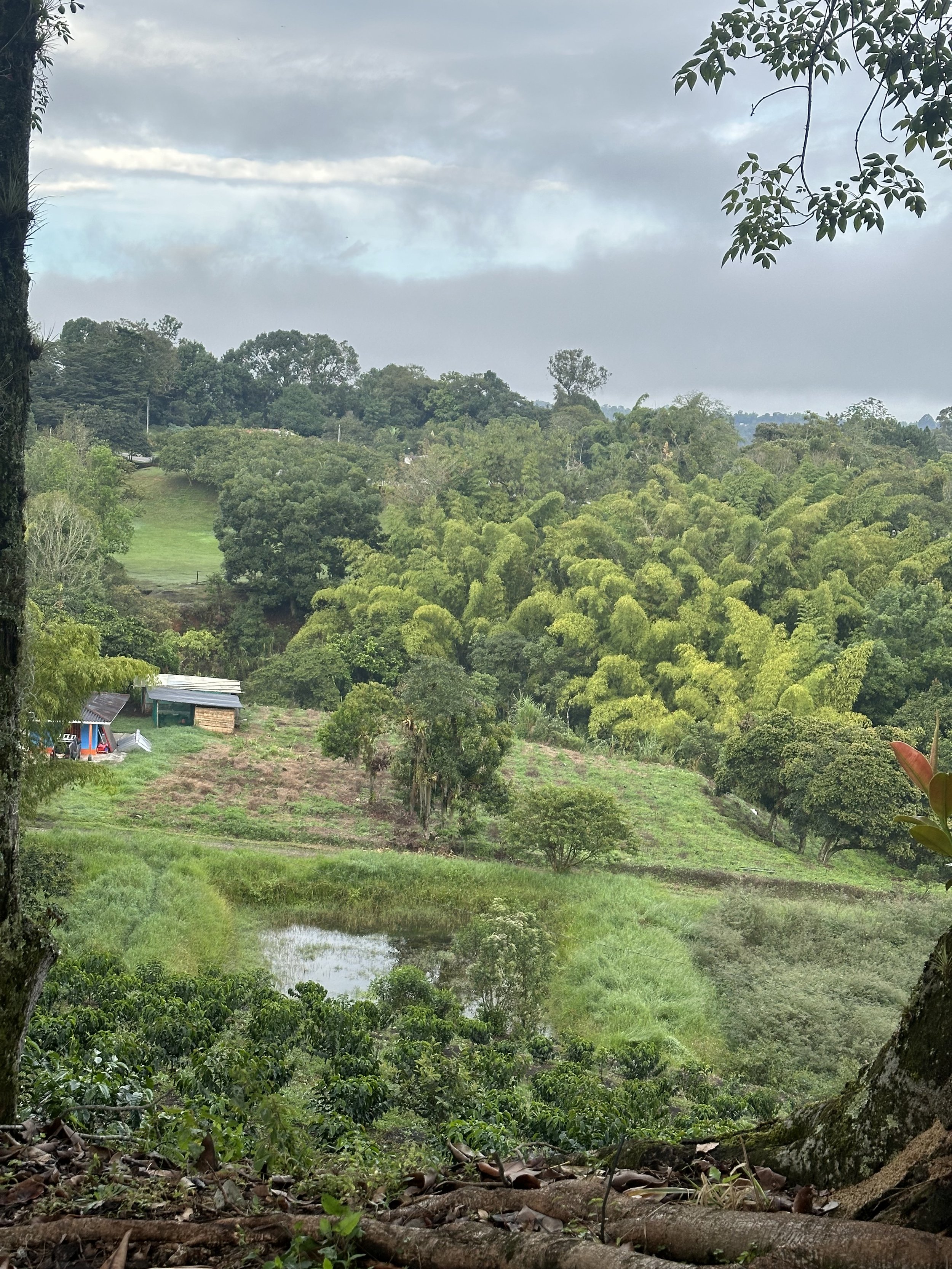
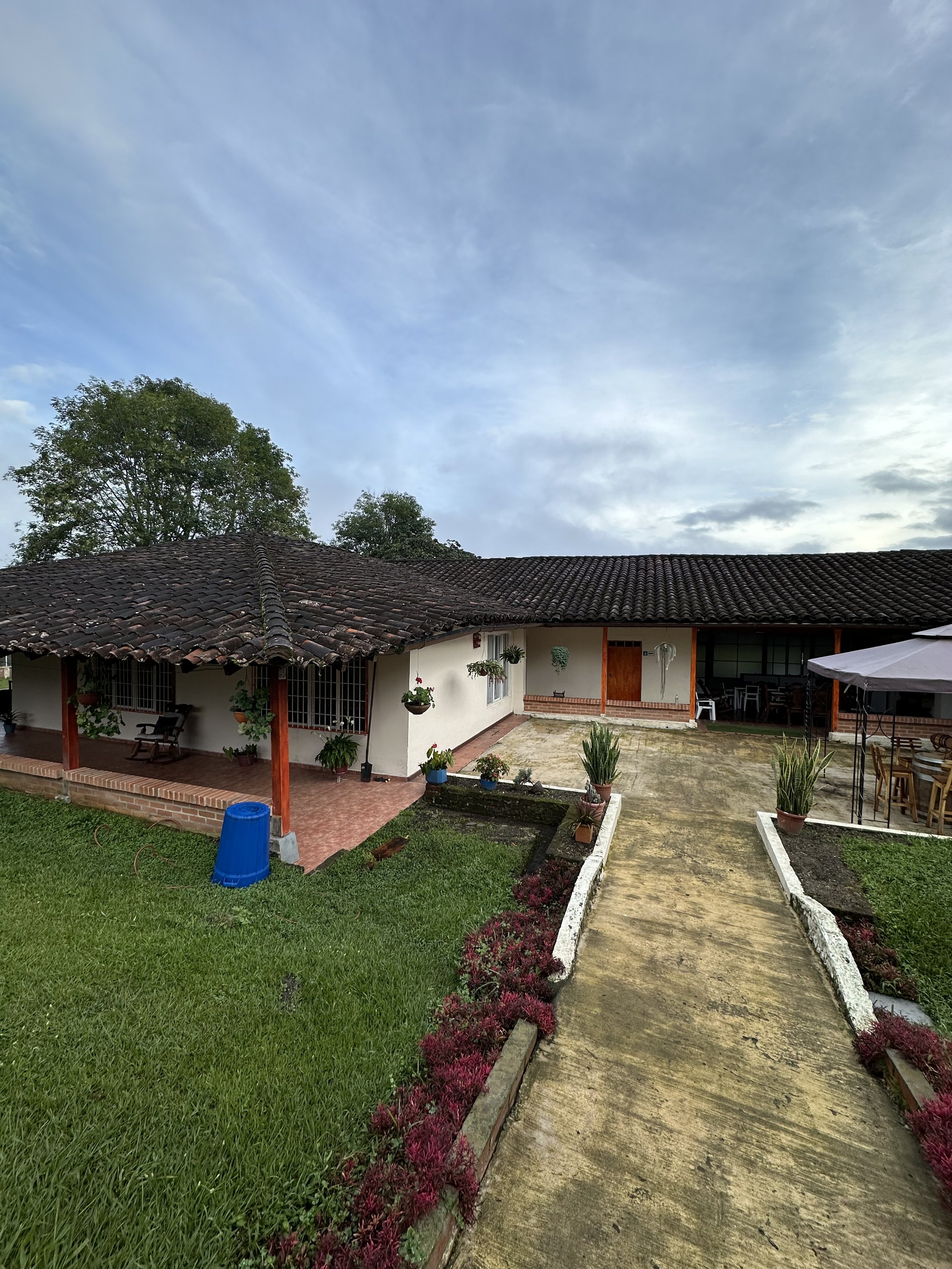
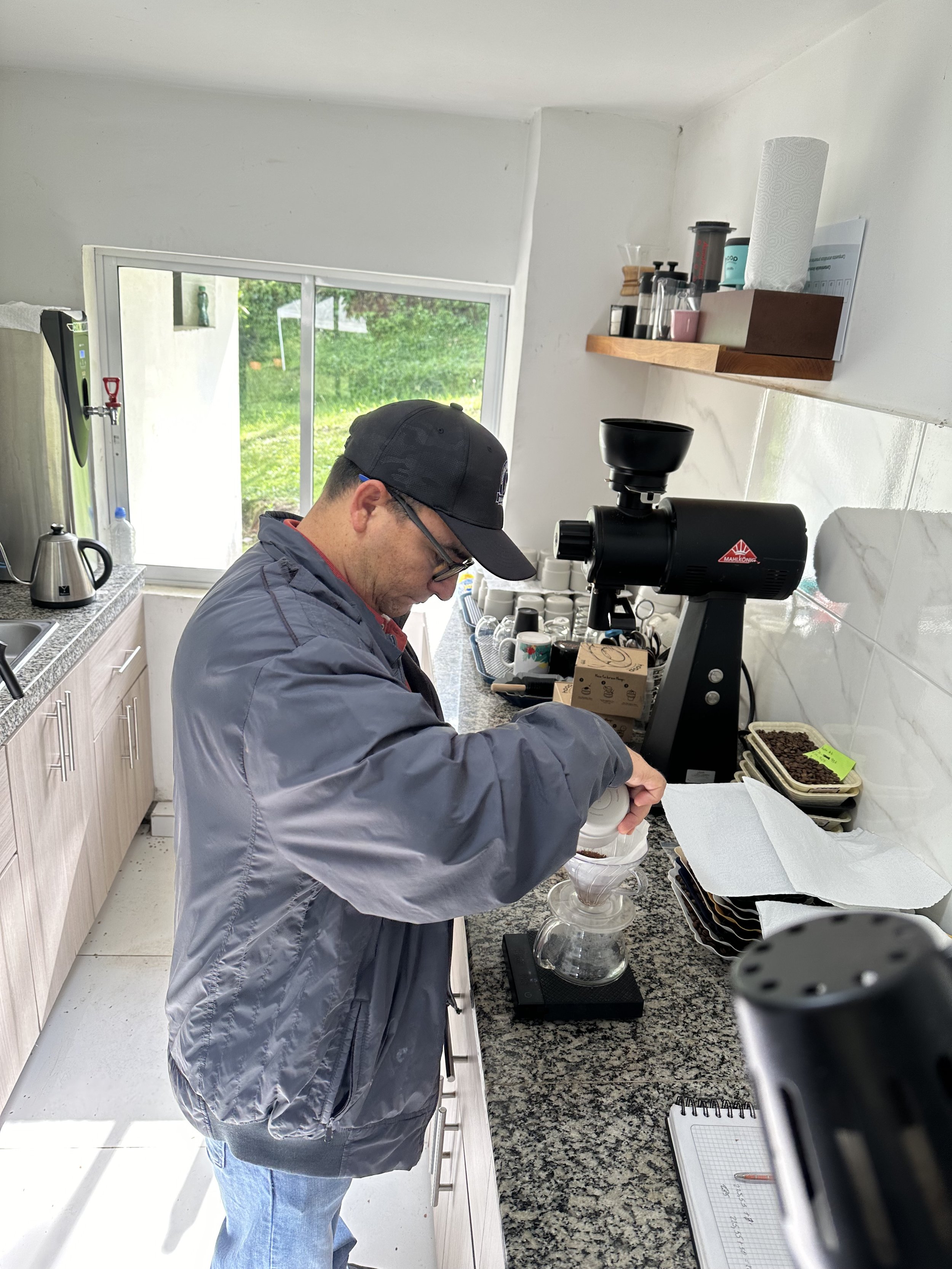
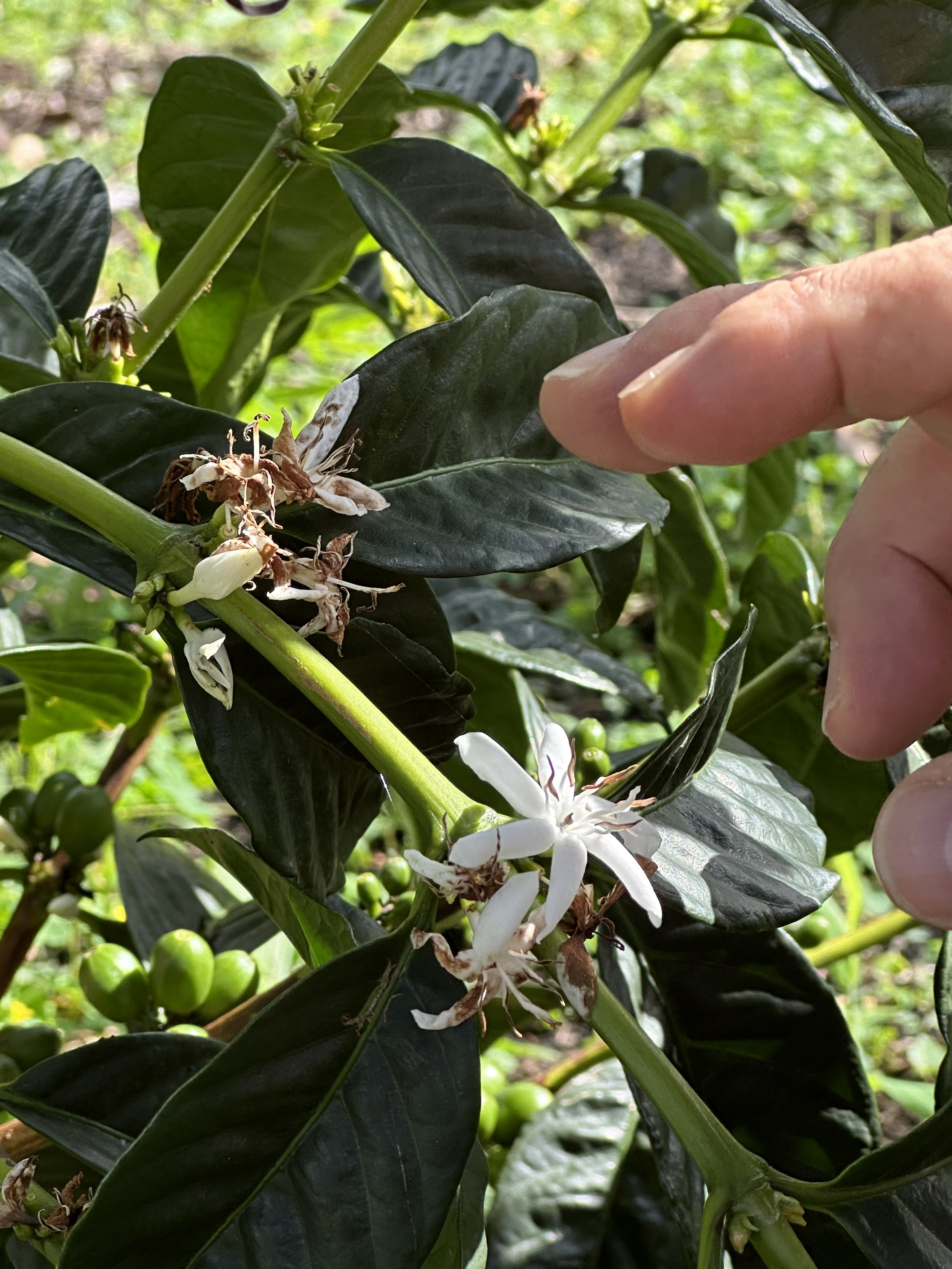
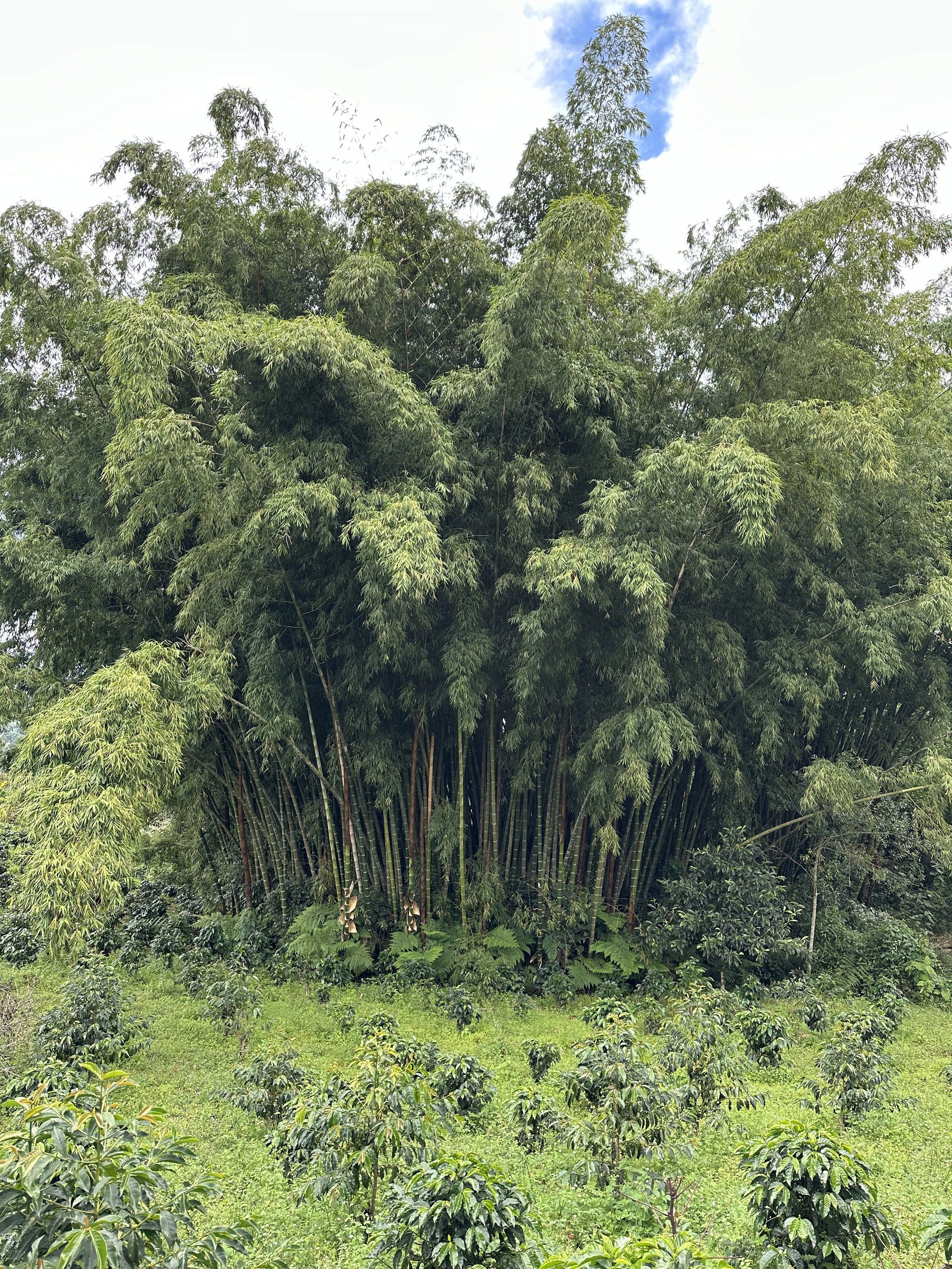
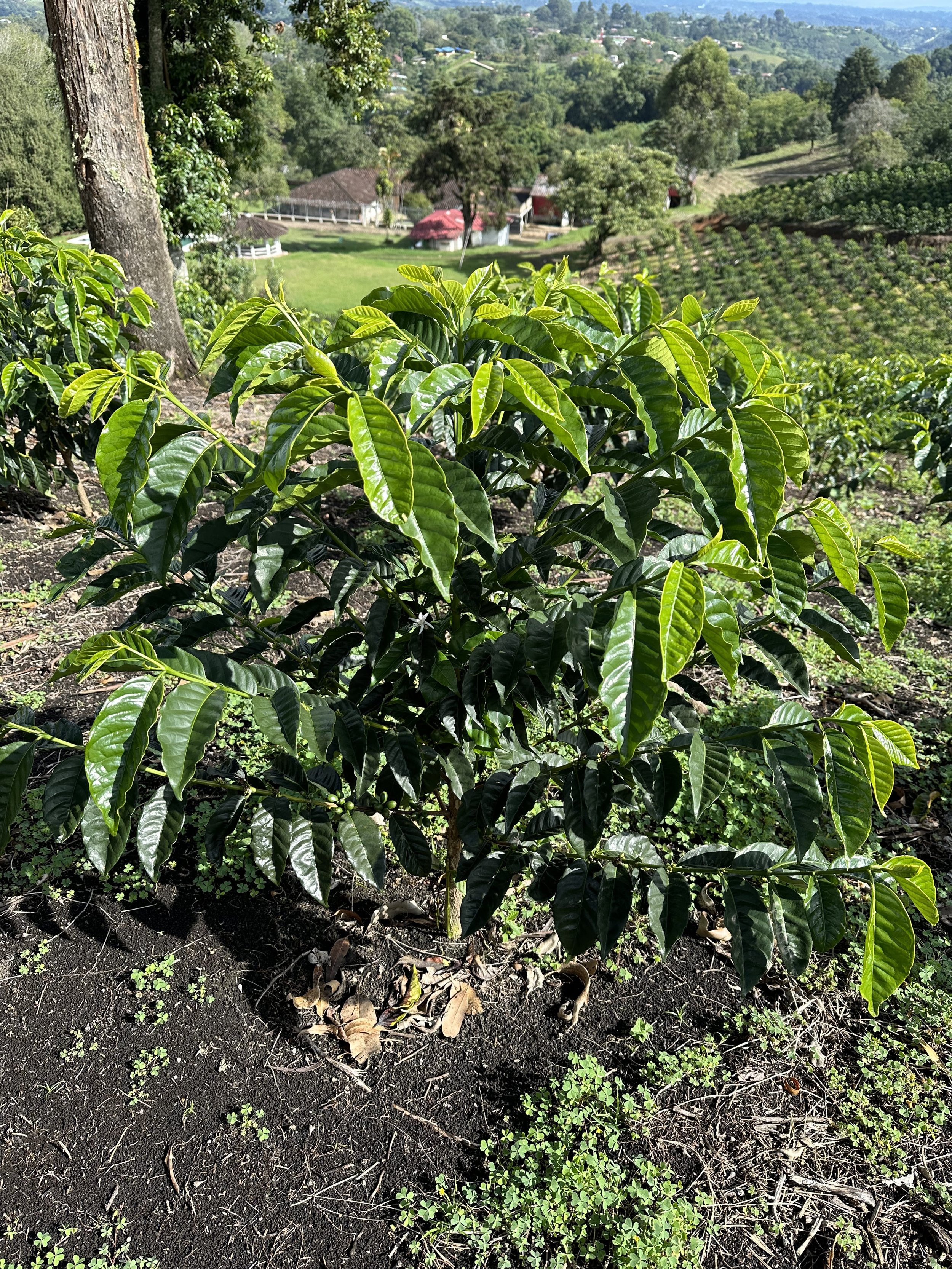

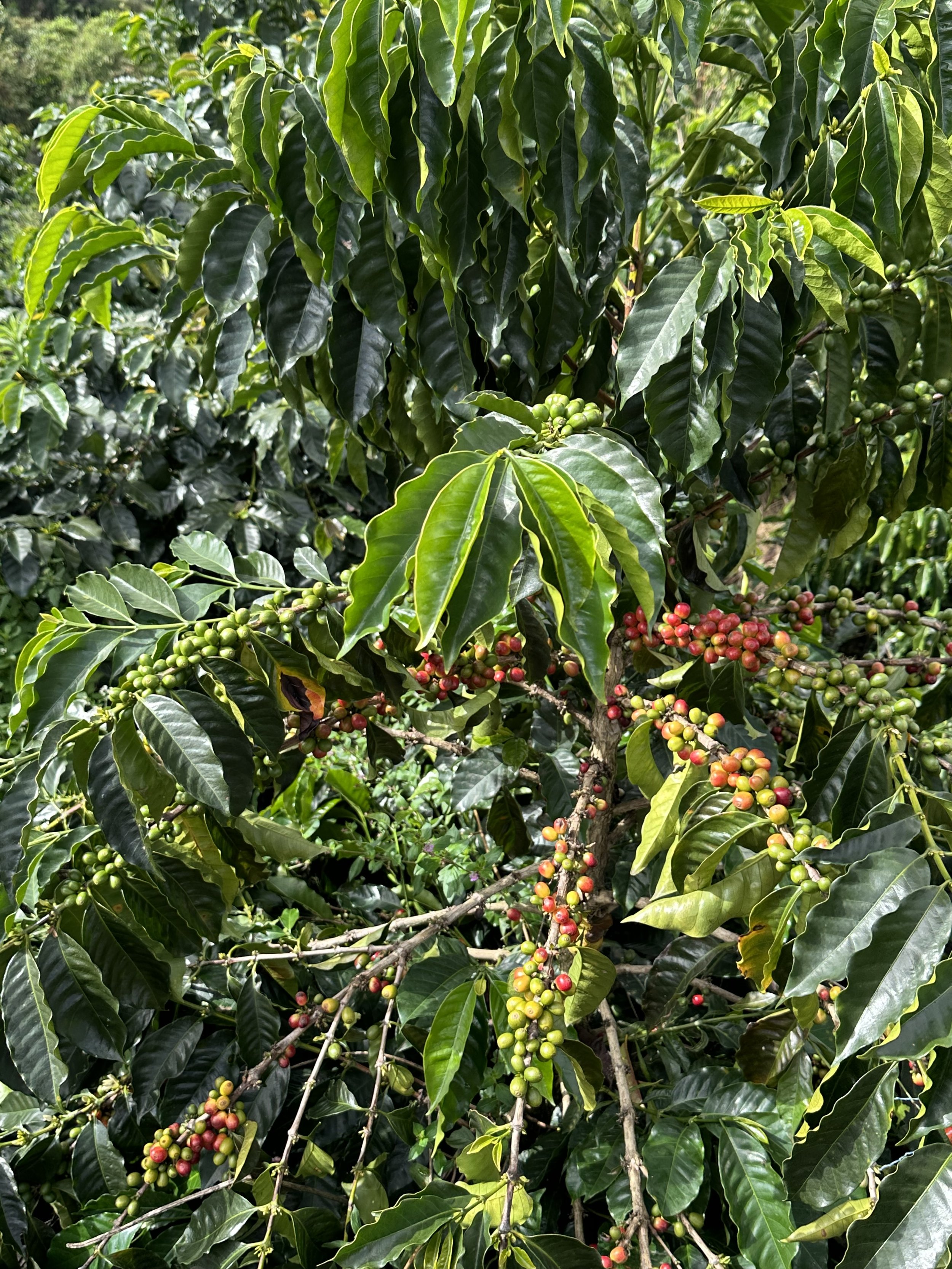
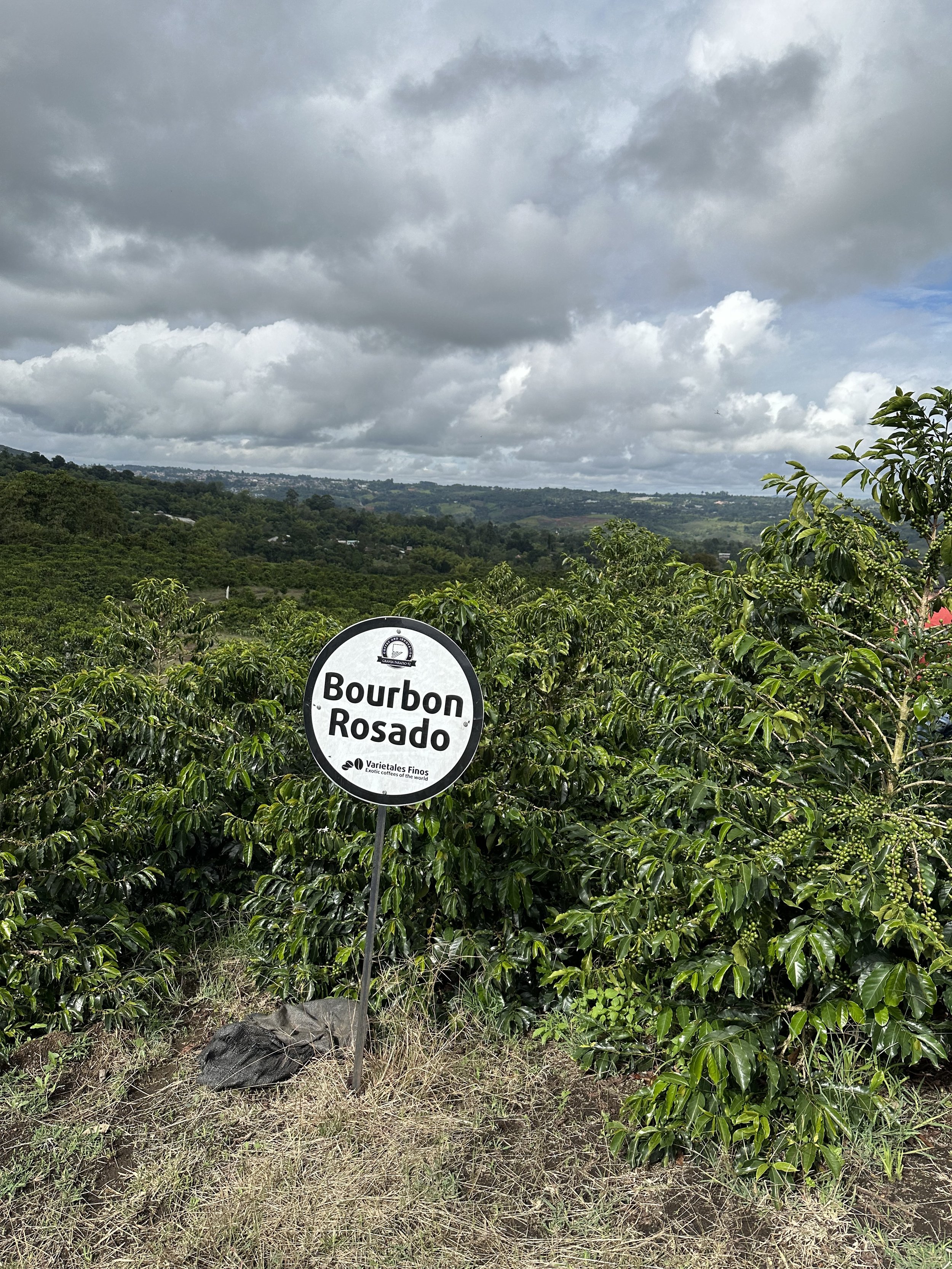















Language and Communication in Colombia
To my surprise, English is not spoken much—or at all—in many parts of Colombia. The primary language is Spanish, and I quickly realized that navigating conversations would be more challenging than I expected. As a Filipino, I thought the similarity between Tagalog and Spanish—given that some words overlap—might help. However, it quickly became clear that while a few familiar words exist, the similarities were not enough to bridge the language gap. In fact, there were moments when I discovered that some Tagalog words are considered “profanities” in Colombian Spanish! 😂
Luckily, I had come prepared. I brought along a universal translator from Timekettle, which turned out to be a lifesaver. The device allowed me to engage in real-time conversations with the locals, making it much easier to communicate and fully immerse myself in the experience. The locals also found the Timekettle very easy to use and Oscar even ordered one from Amazon. With the translator’s help, I could ask questions, understand the coffee processes in detail, and connect more meaningfully with Wilton and his team.
Another lifesaver was Wilton’s proficiency in English, which he jokingly said he learned through Duolingo and watching YouTube videos!
Even with the language barrier, the warmth and friendliness of the people, combined with my trusty translator, made the entire journey smooth and enjoyable. The experience also taught me that while language is important, a smile, shared passion, and mutual respect can transcend any communication barrier.
Football is a part of Colombia's culture, we watched the semi-finals and finals of the Copa América games
The Farm House
In the middle of the farm stood a house built over 100 years ago, with a design reminiscent of the Filipino Spanish colonial house . This beautiful, colonial Spanish home was to be my residence for the duration of my stay at Granja Paraiso. The house featured two wings—one to the east and one to the west—and at its center was a stunning 20-meter swimming pool. I jokingly asked if they ever used the pool for coffee fermentations!
The room I stayed in was spacious and comfortable. The shower had hot water, and the bed was massive, making it the perfect retreat after long, immersive days on the farm. The farmhouse itself was filled with charm and history, offering a peaceful and inviting atmosphere that made my stay even more special.

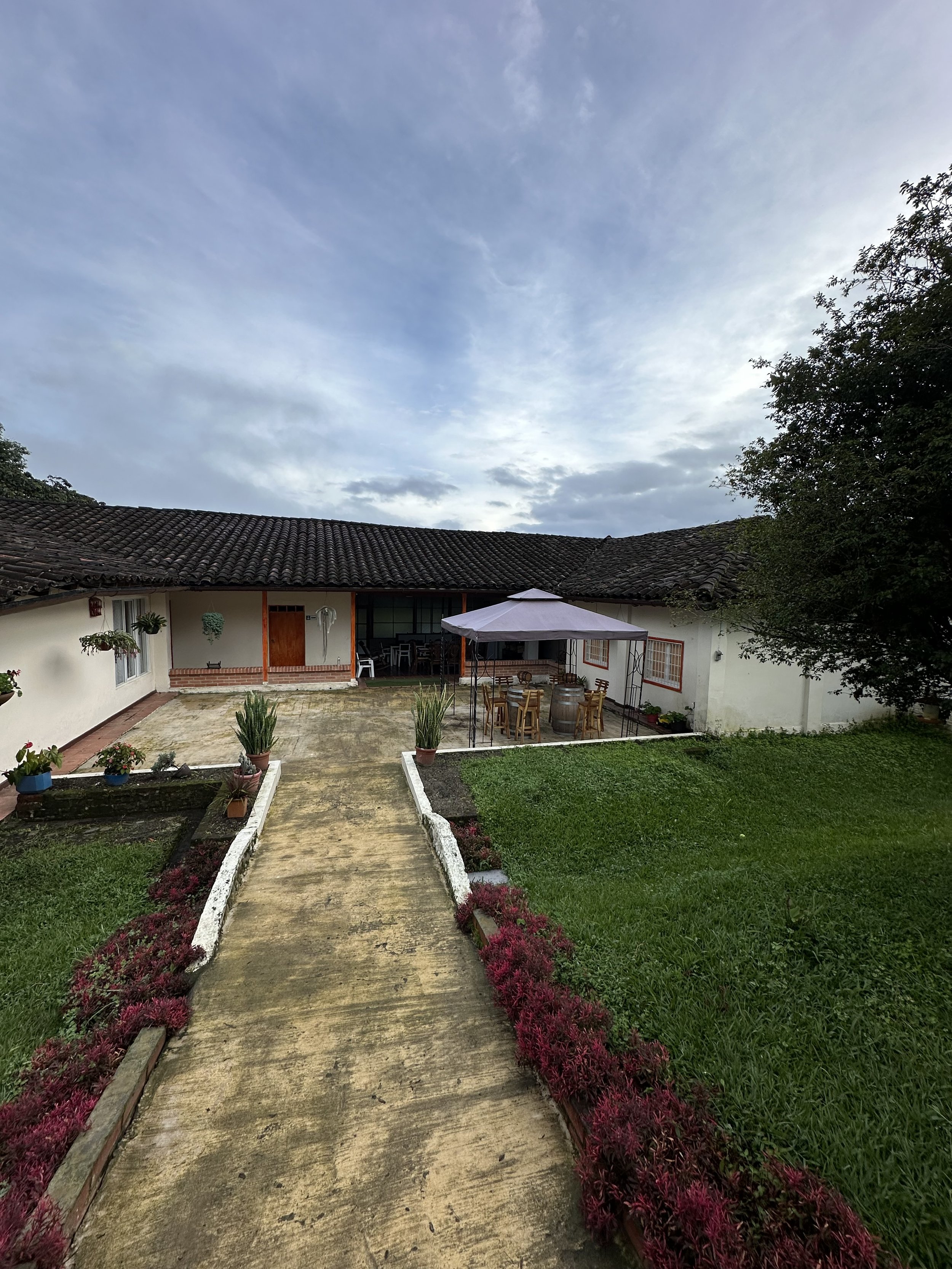

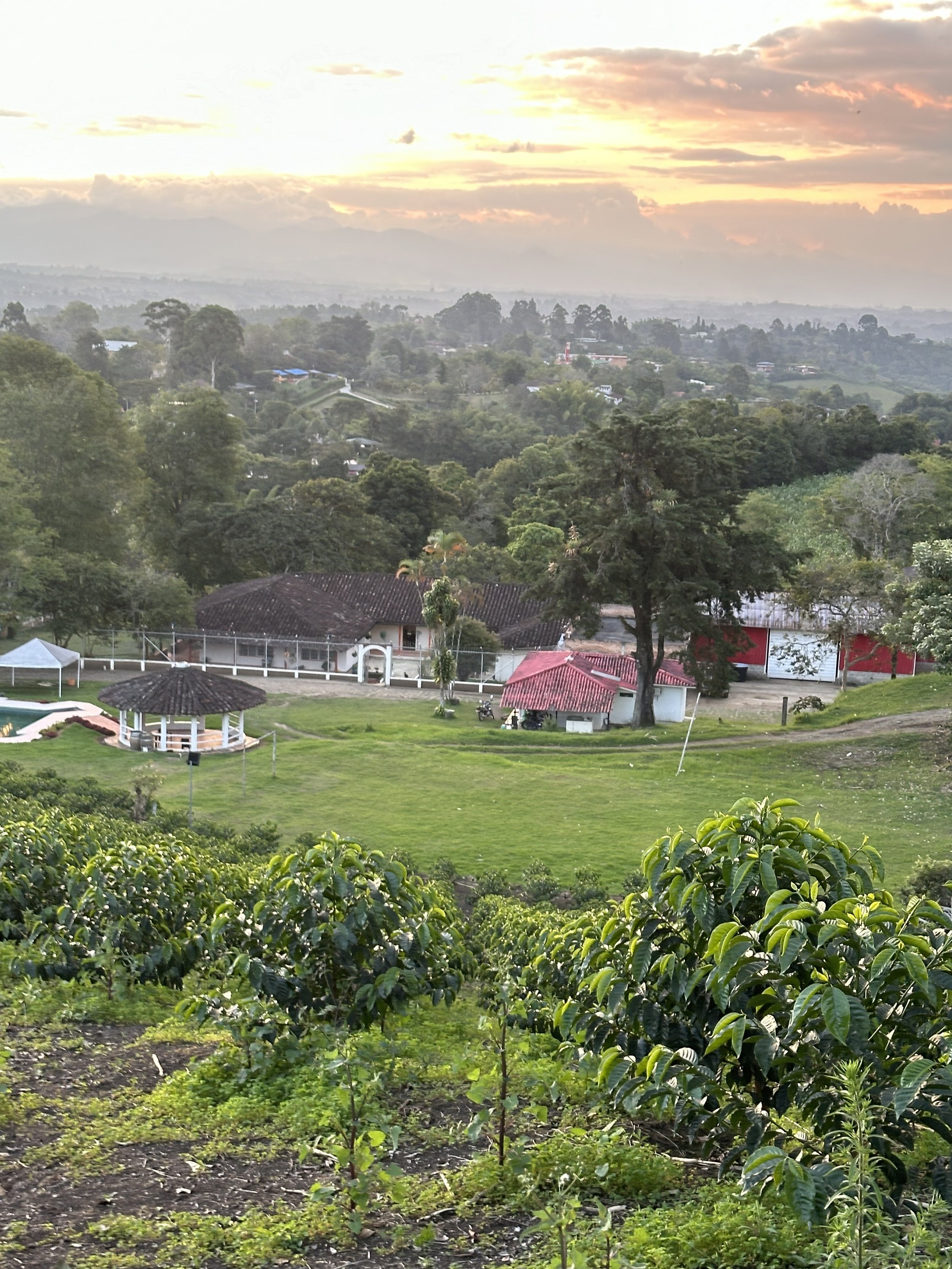
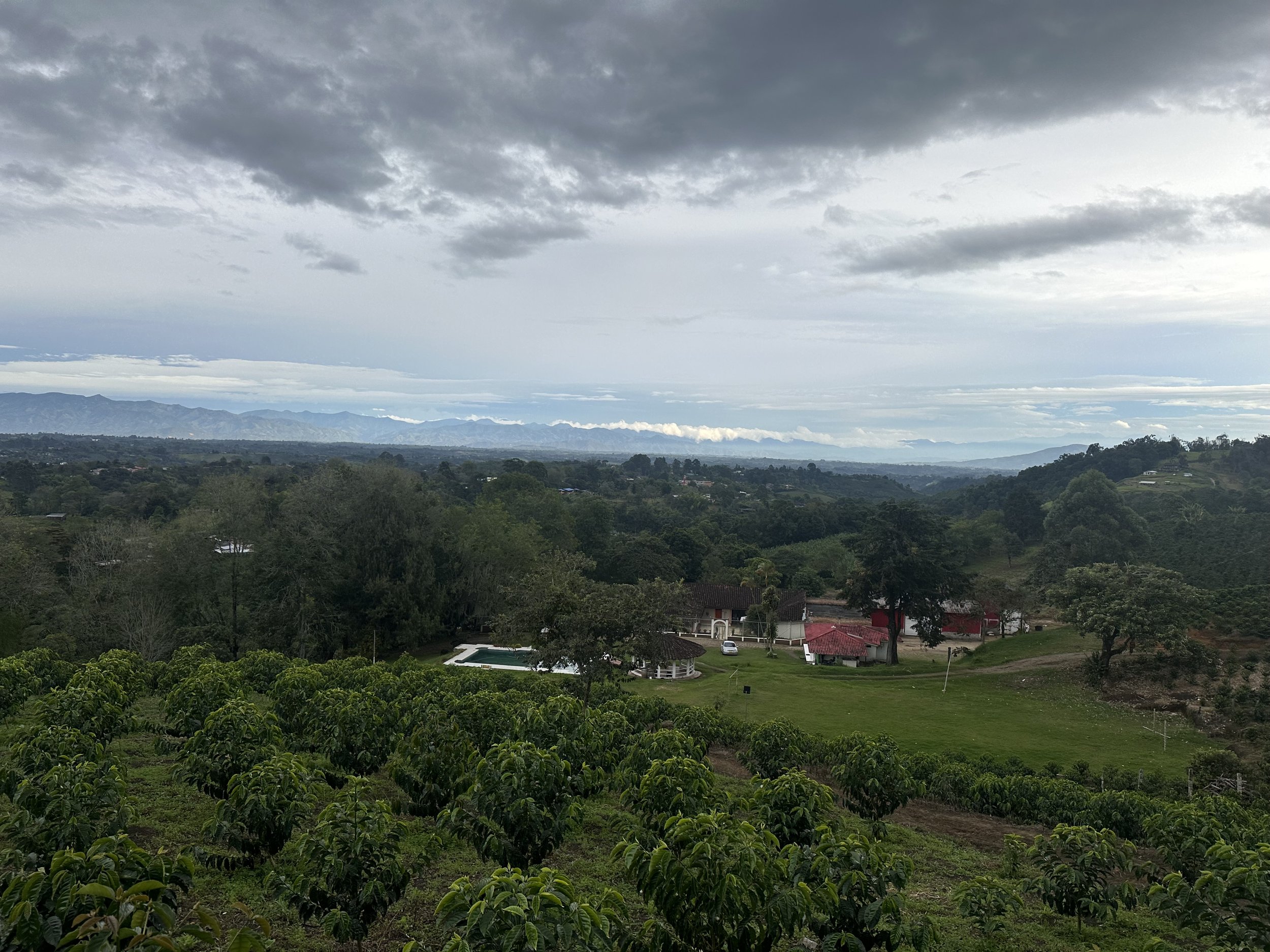
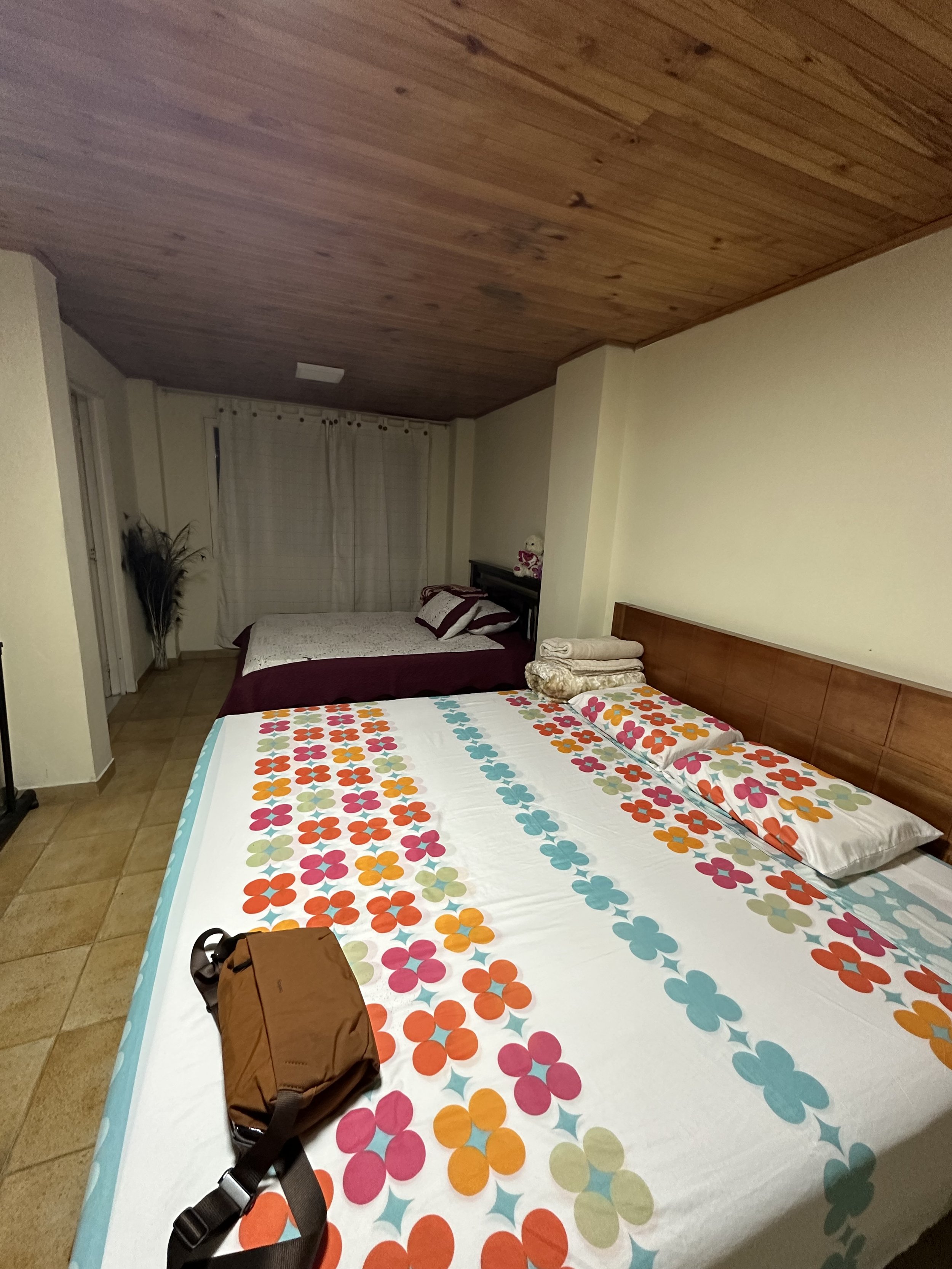
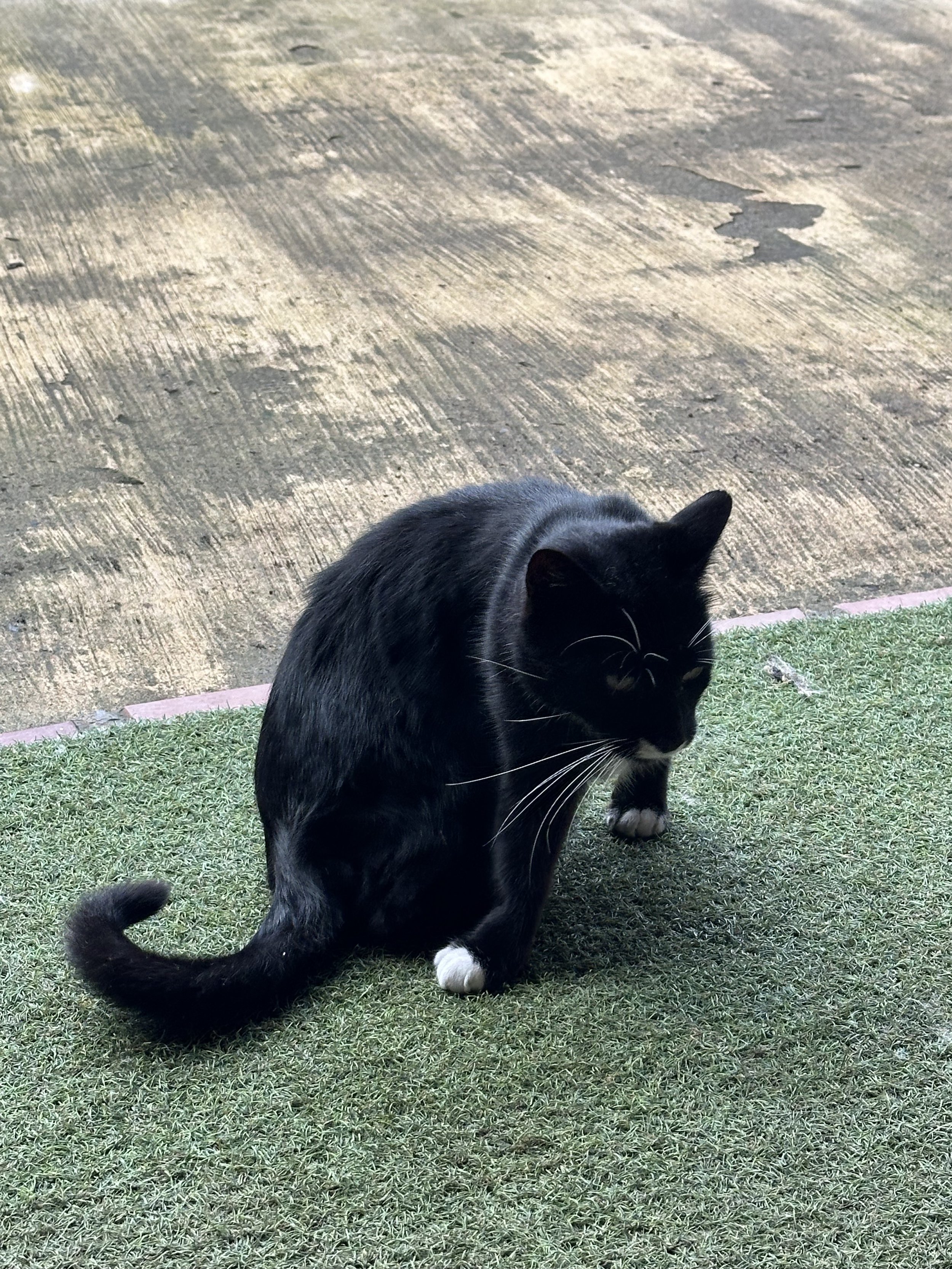
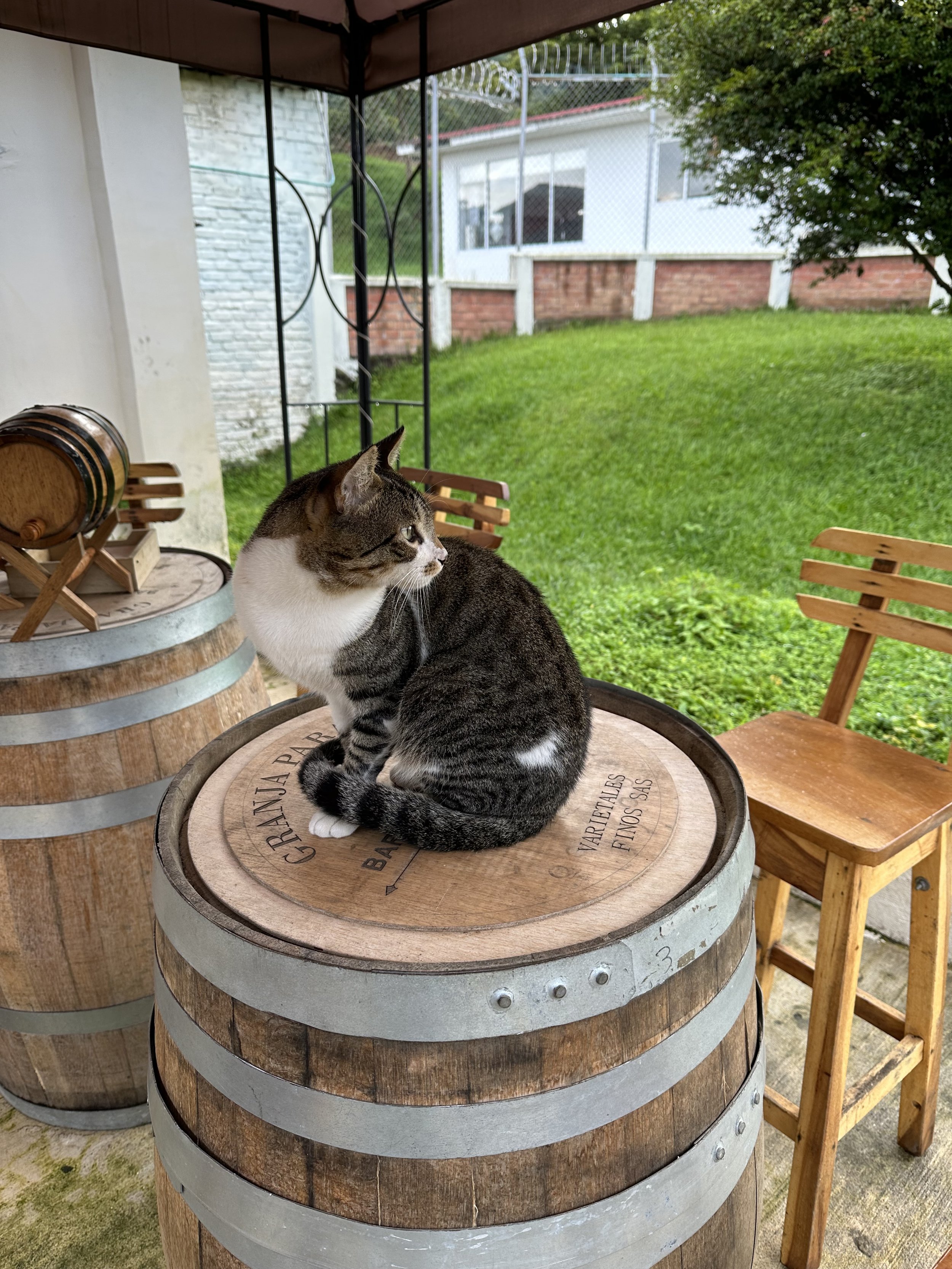
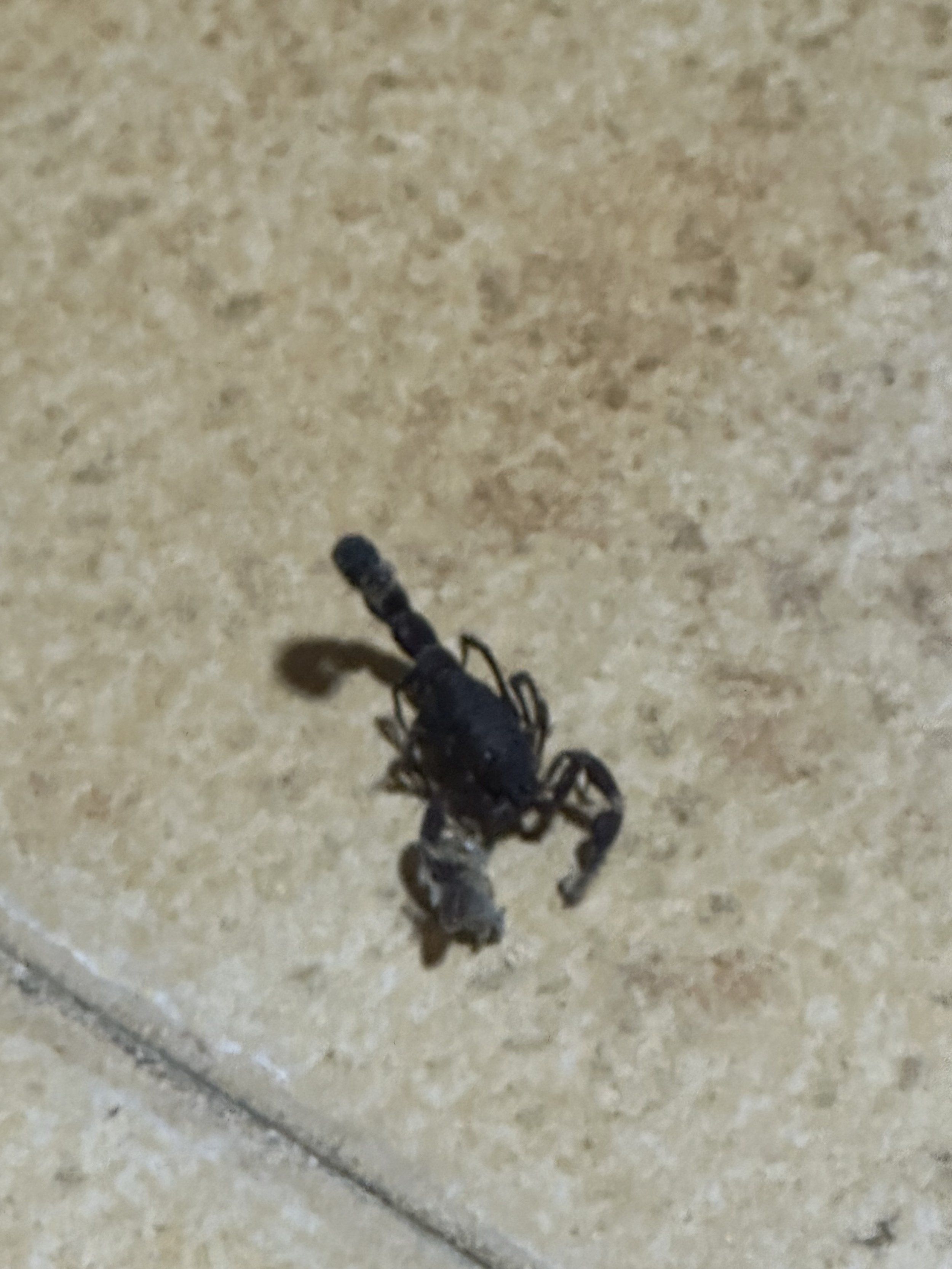
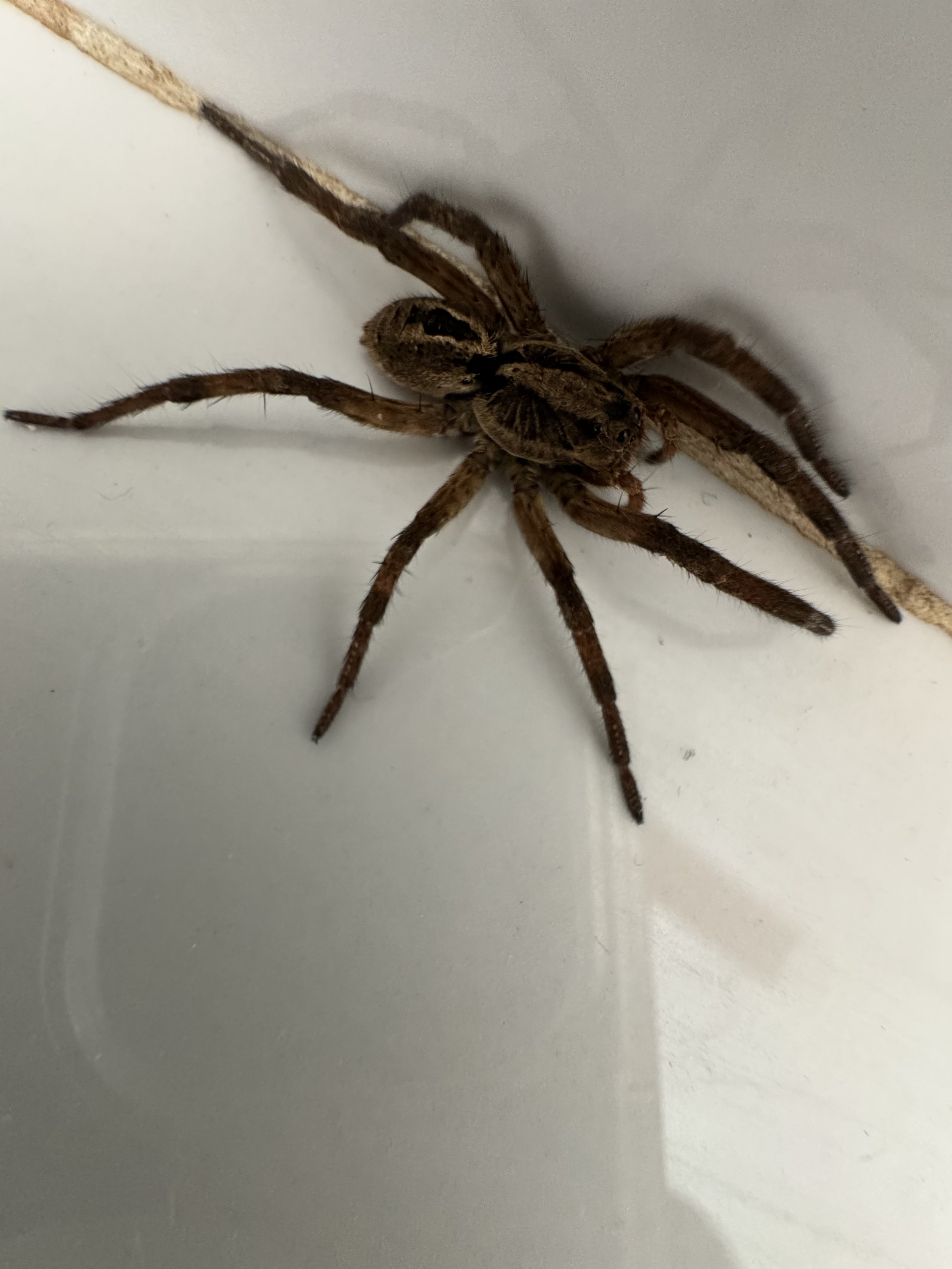
Colombian Food and Hospitality
One of the highlights of my time at Granja Paraiso was the food. During the weekdays, the farmhouse had a chef who prepared delicious meals for the staff and guests. Each dish was fresh, flavorful, and carefully crafted, reflecting the rich Colombian flavors with a touch of international influence. The chef had no problem adapting to my pescatarian diet (my friends call it starchitarian as I like rice) , ensuring that every meal was satisfying and aligned with my preferences. However, weekends were even more memorable, as Darwin and Oscar’s sister, Marly, took over the kitchen. She made incredible local Colombian meals, and each one was a culinary experience in itself.
Every morning, Marly would prepare a refreshing and aromatic herbal tea made from coca leaves, a traditional Colombian remedy known for its rejuvenating qualities. She also brewed Aromatic Milk, a delightful drink made with cinnamon, panela (a type of unrefined sugar), and powdered milk. This simple yet comforting drink became my favorite way to start the day, as its warmth and flavor set the perfect tone for the rest of the morning.
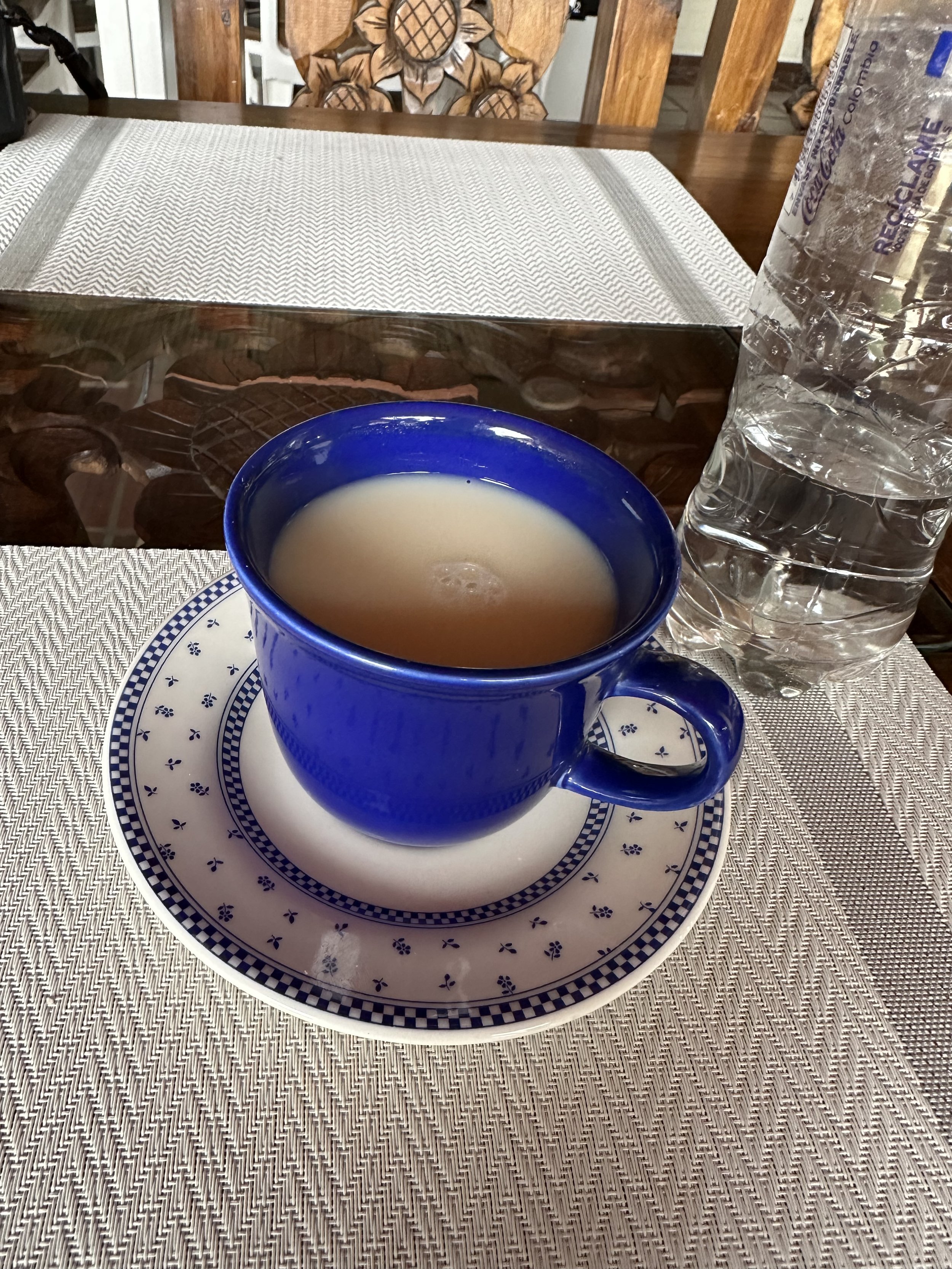
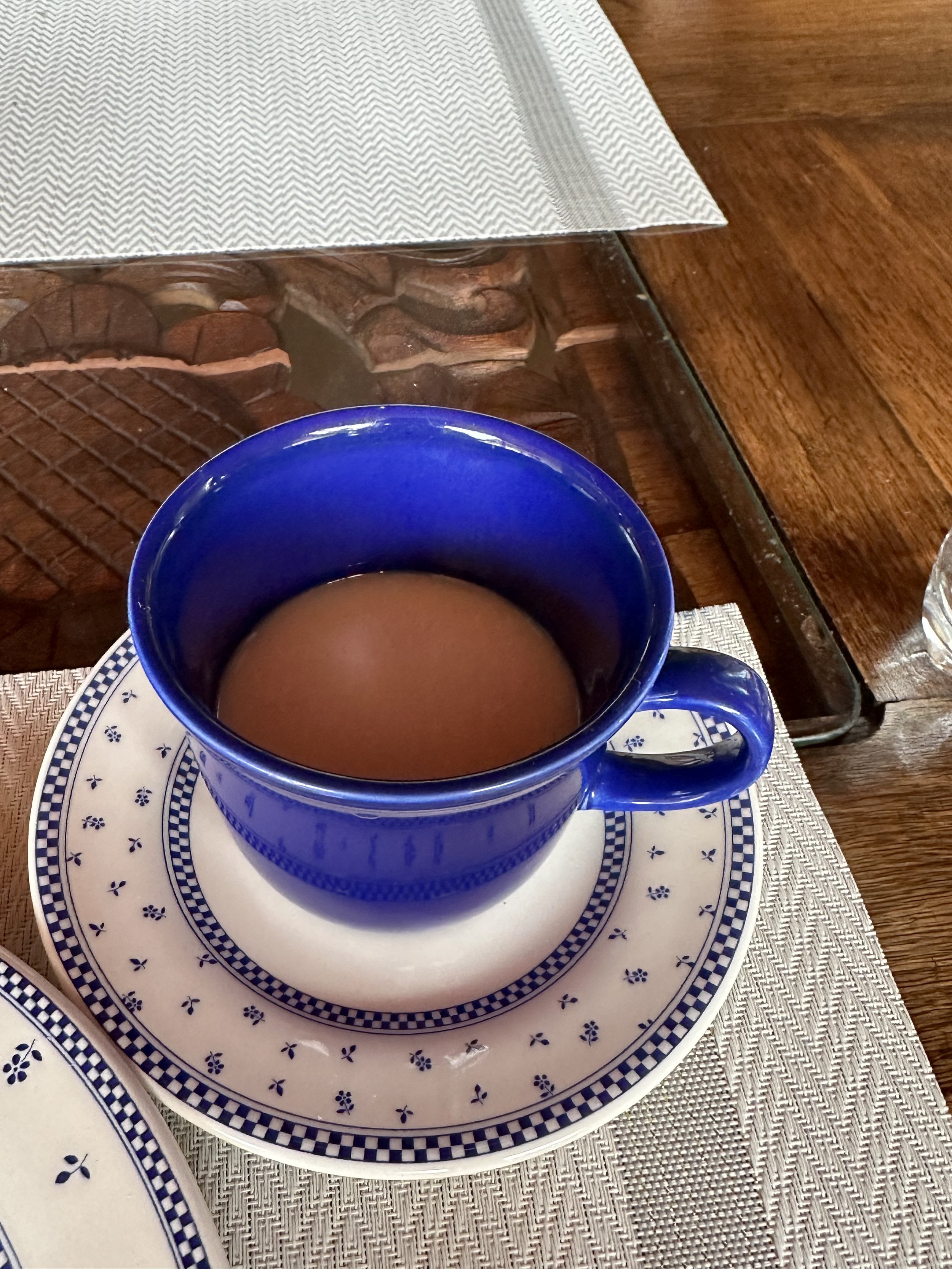


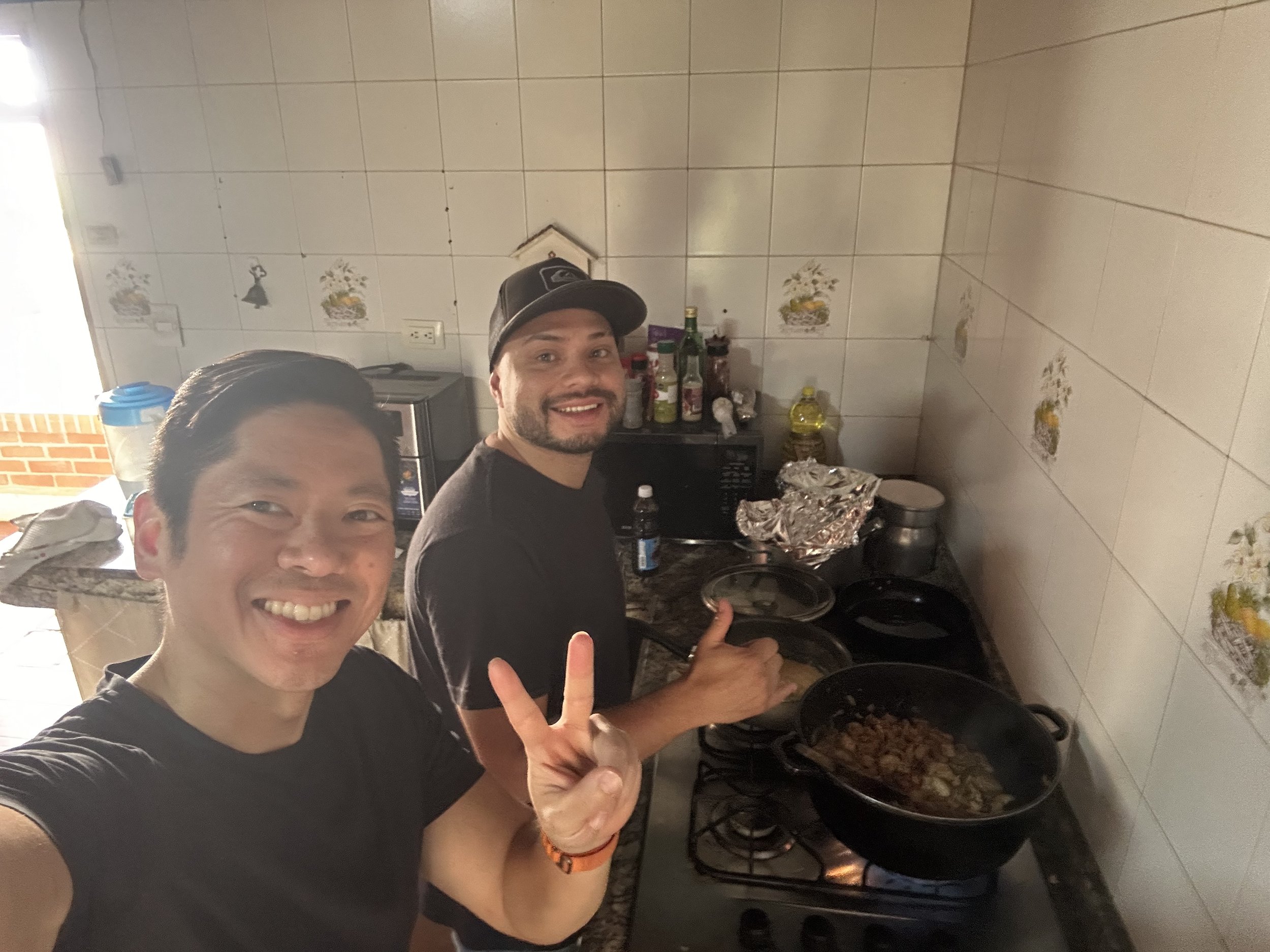
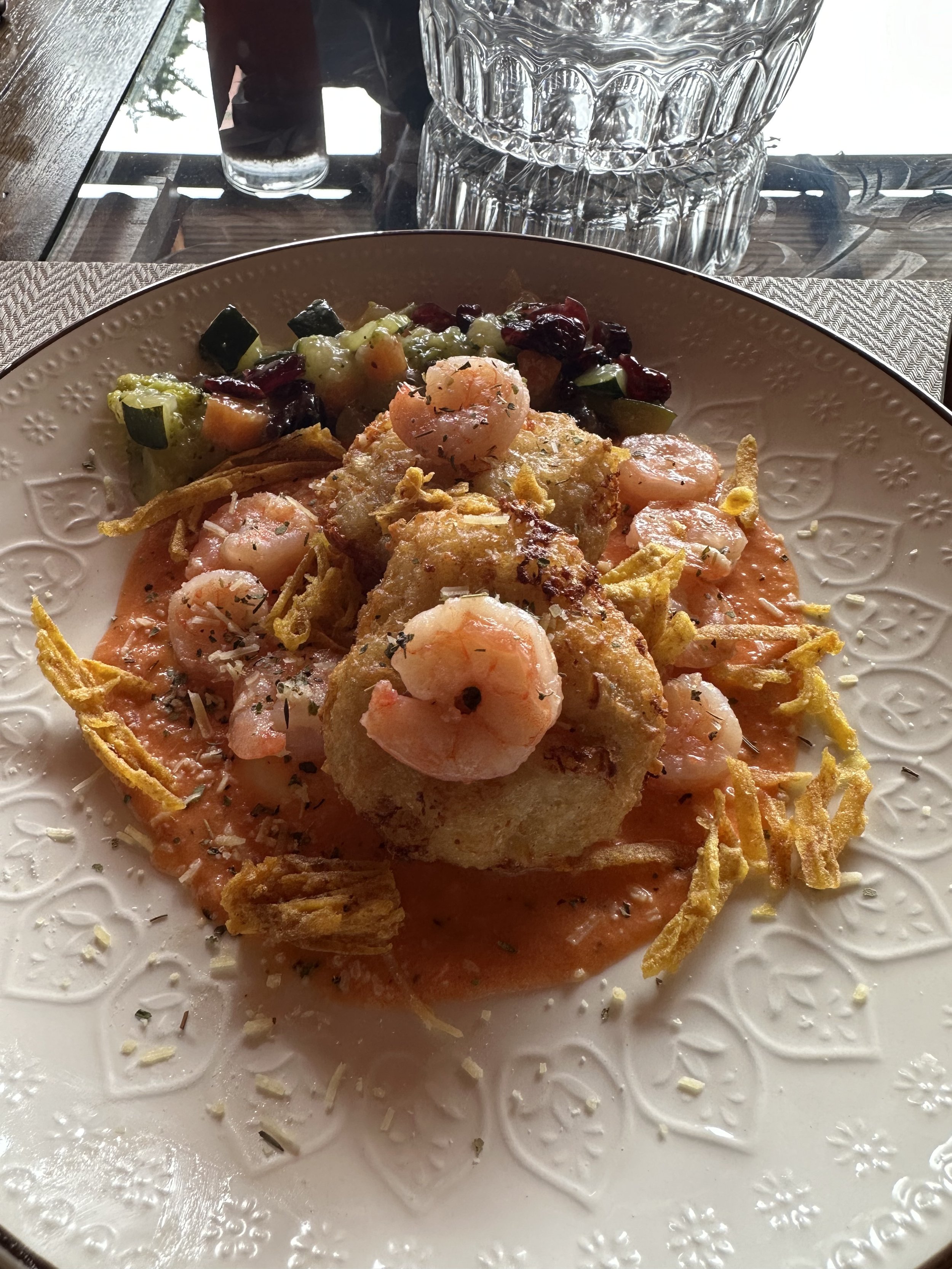
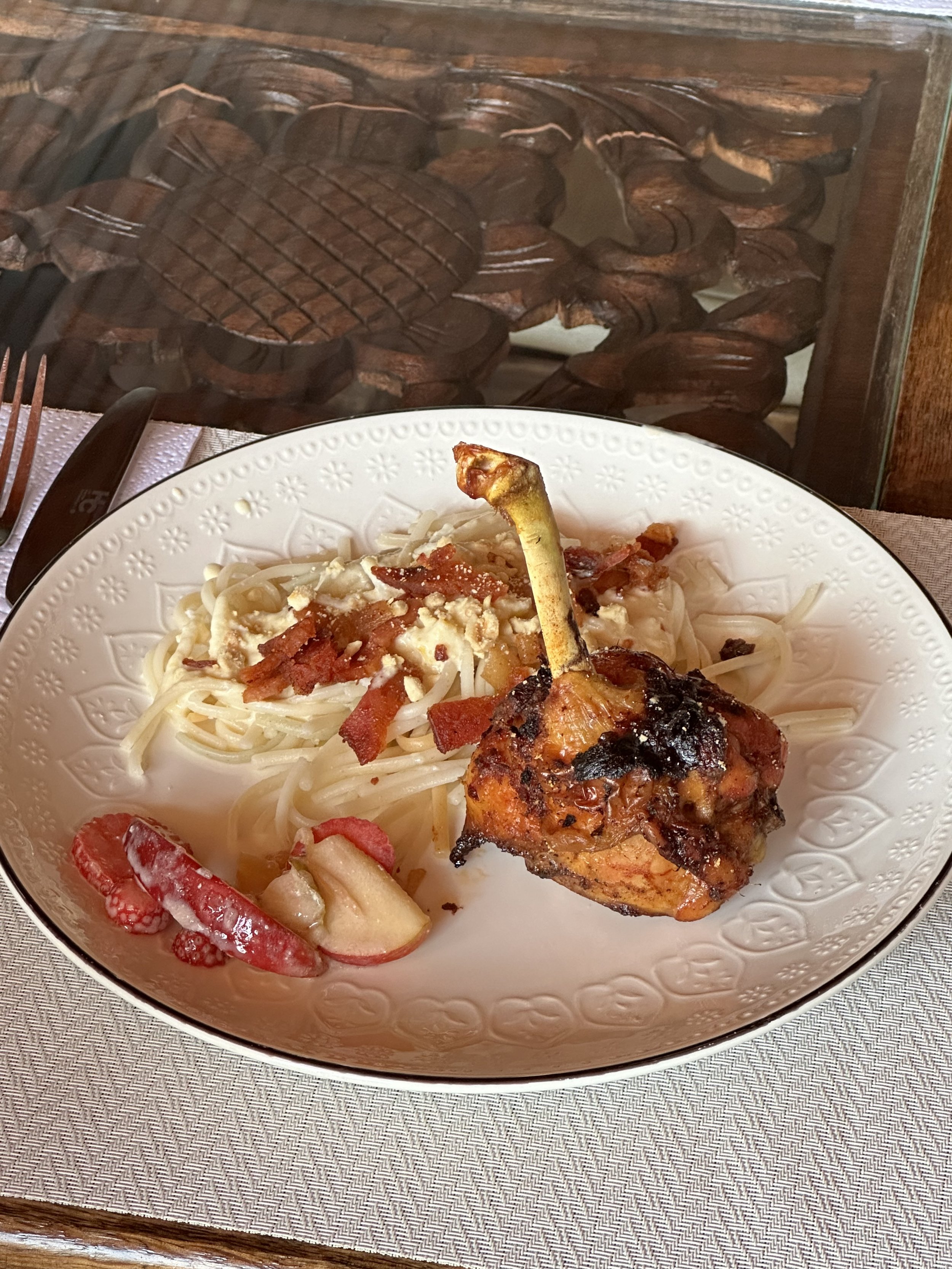

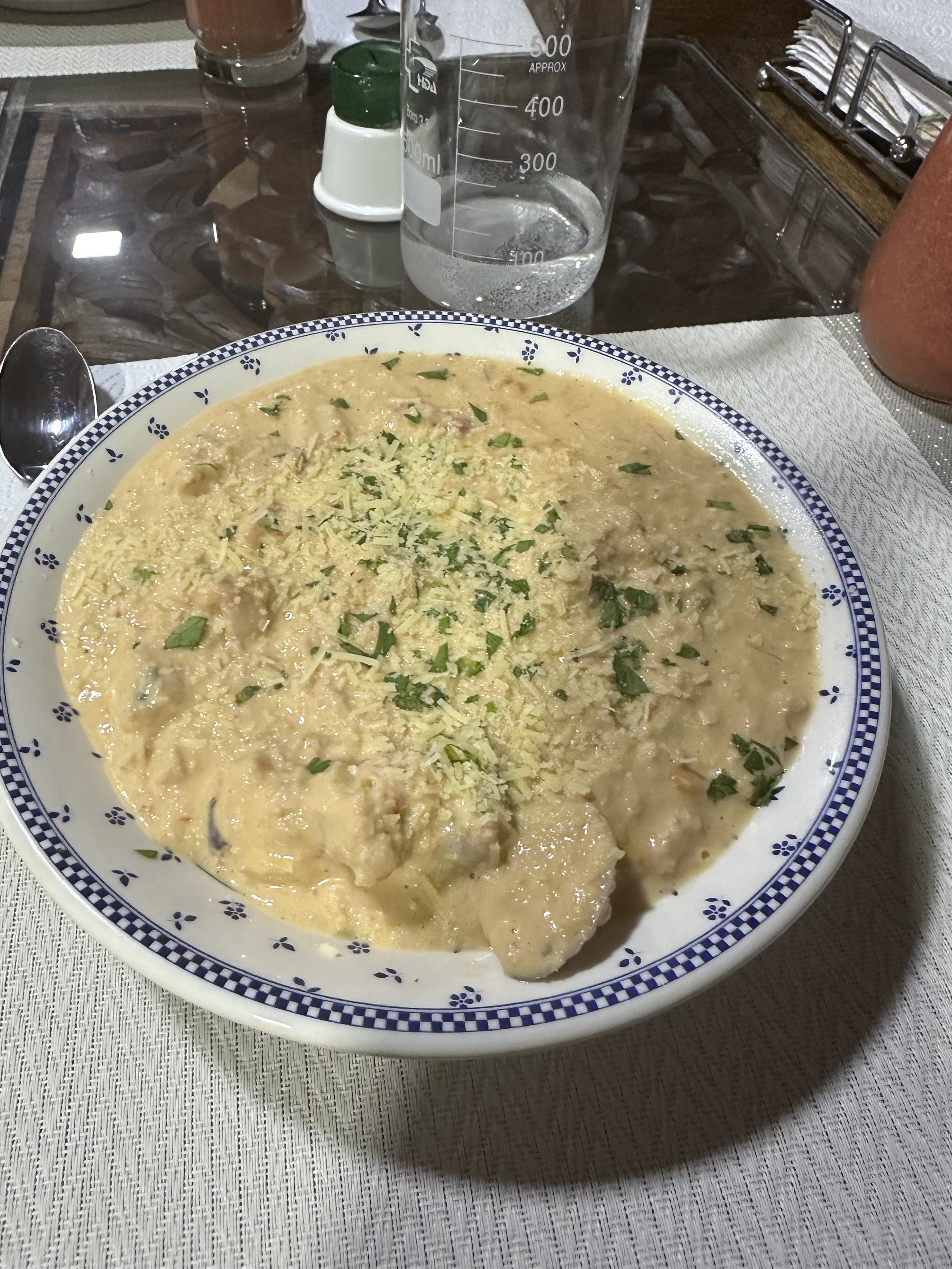
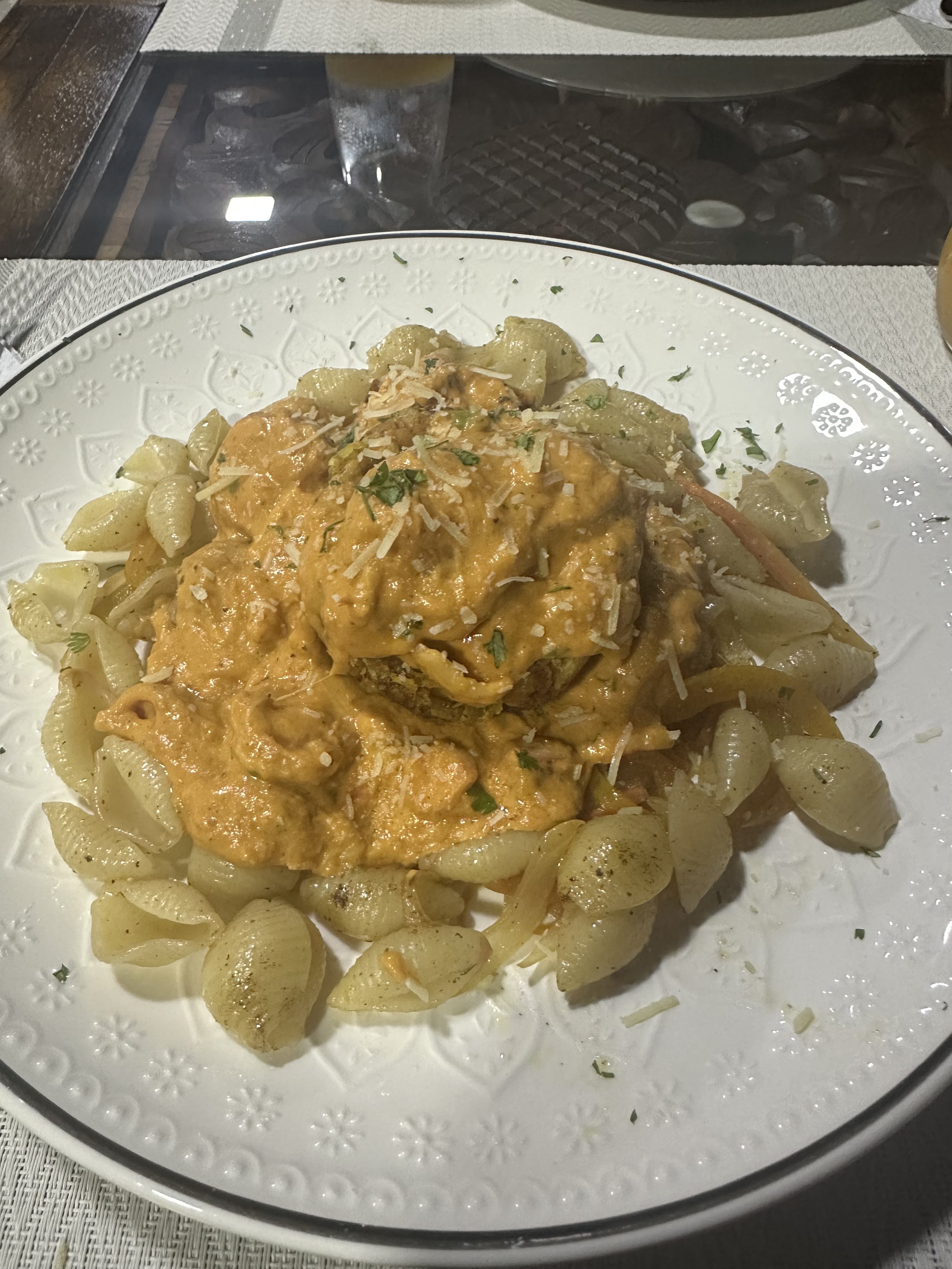


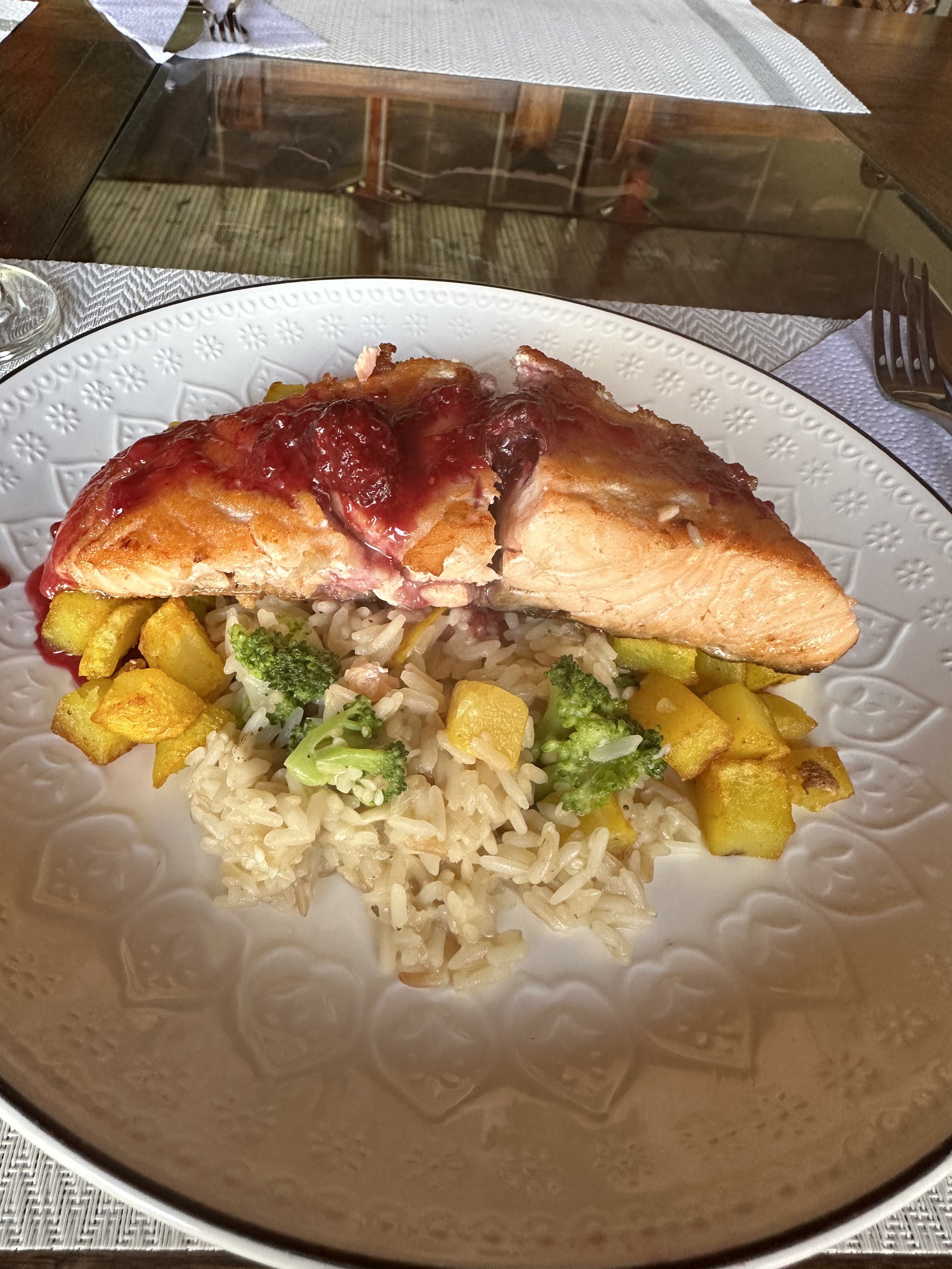
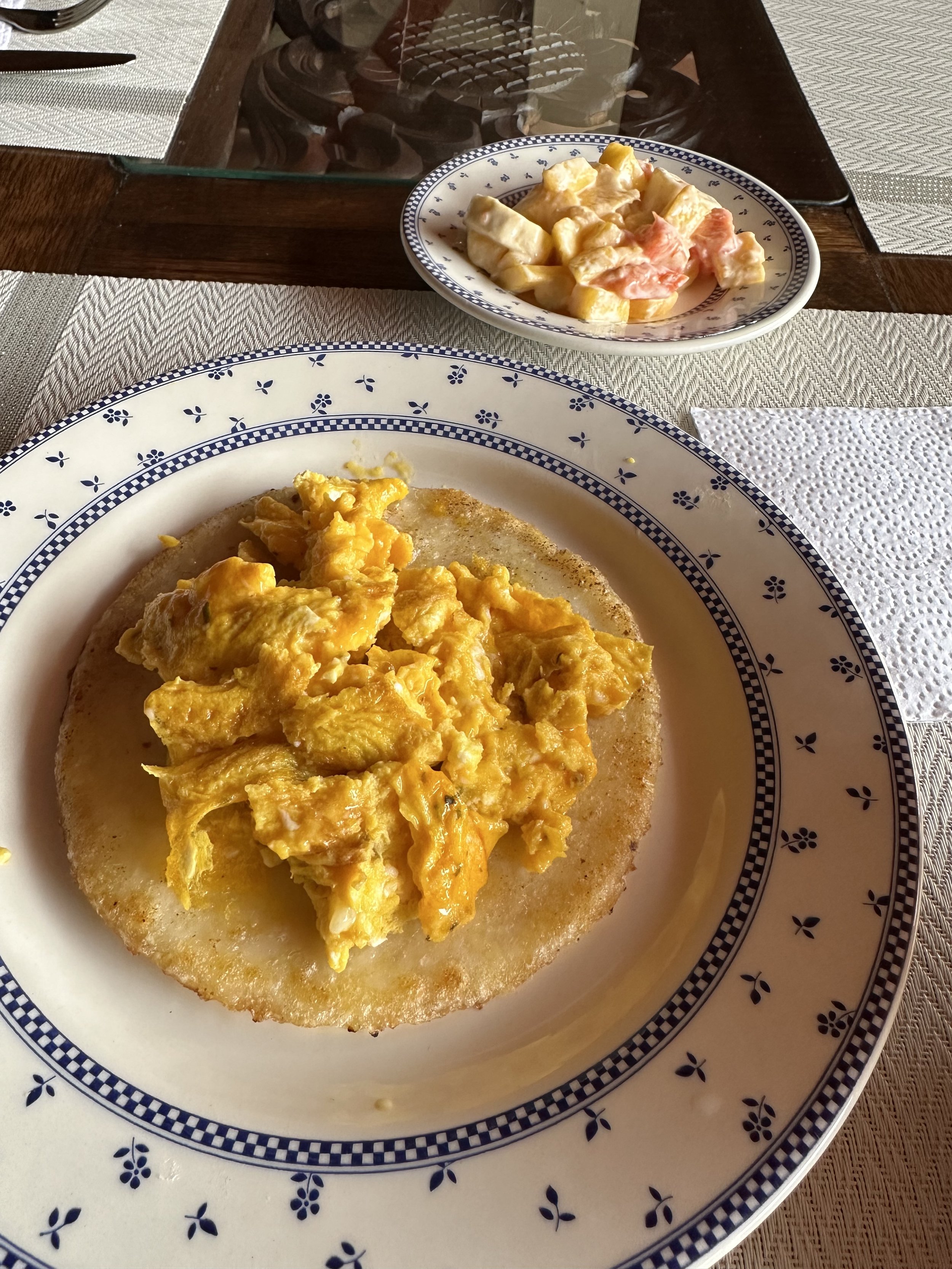
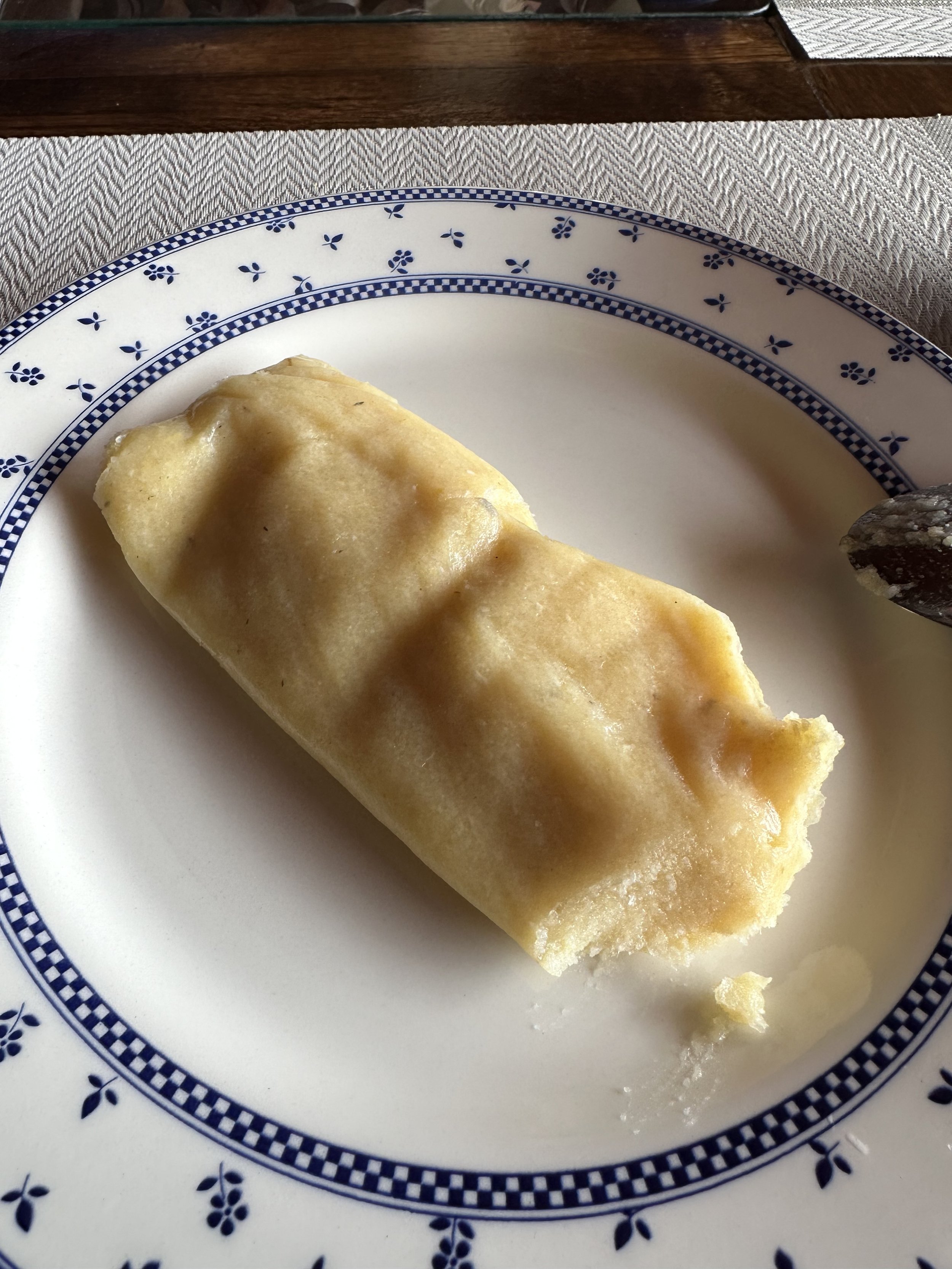
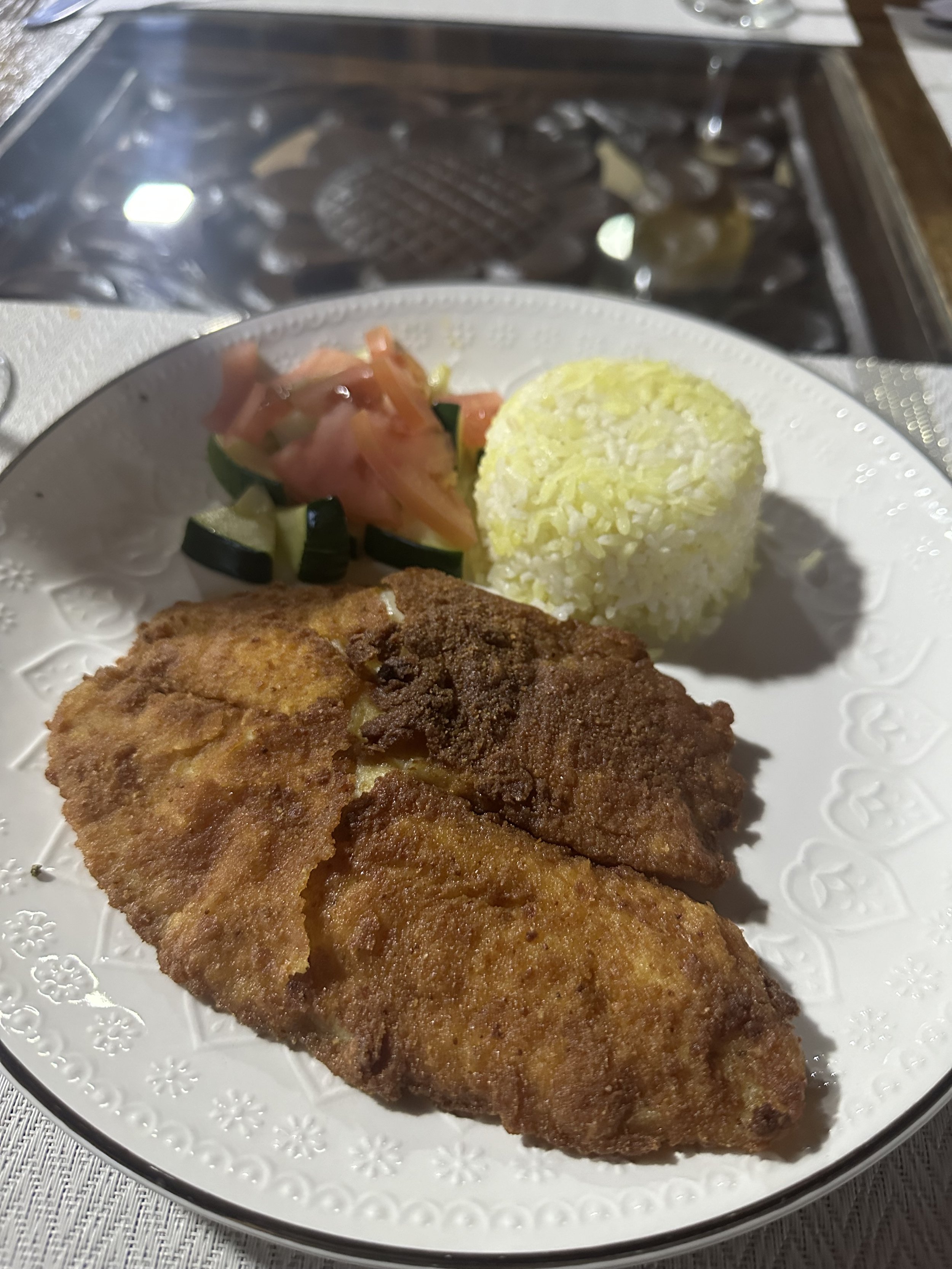
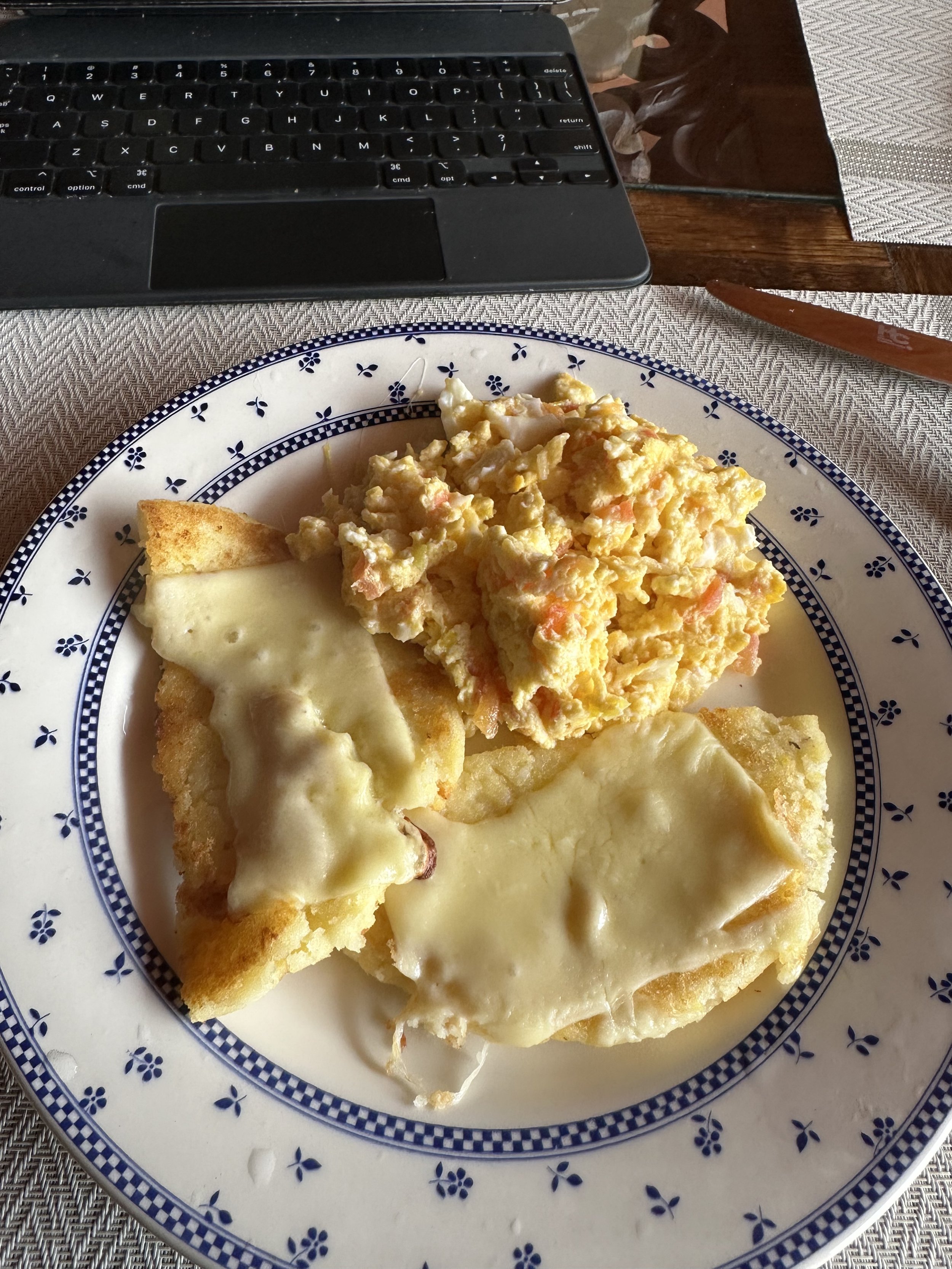
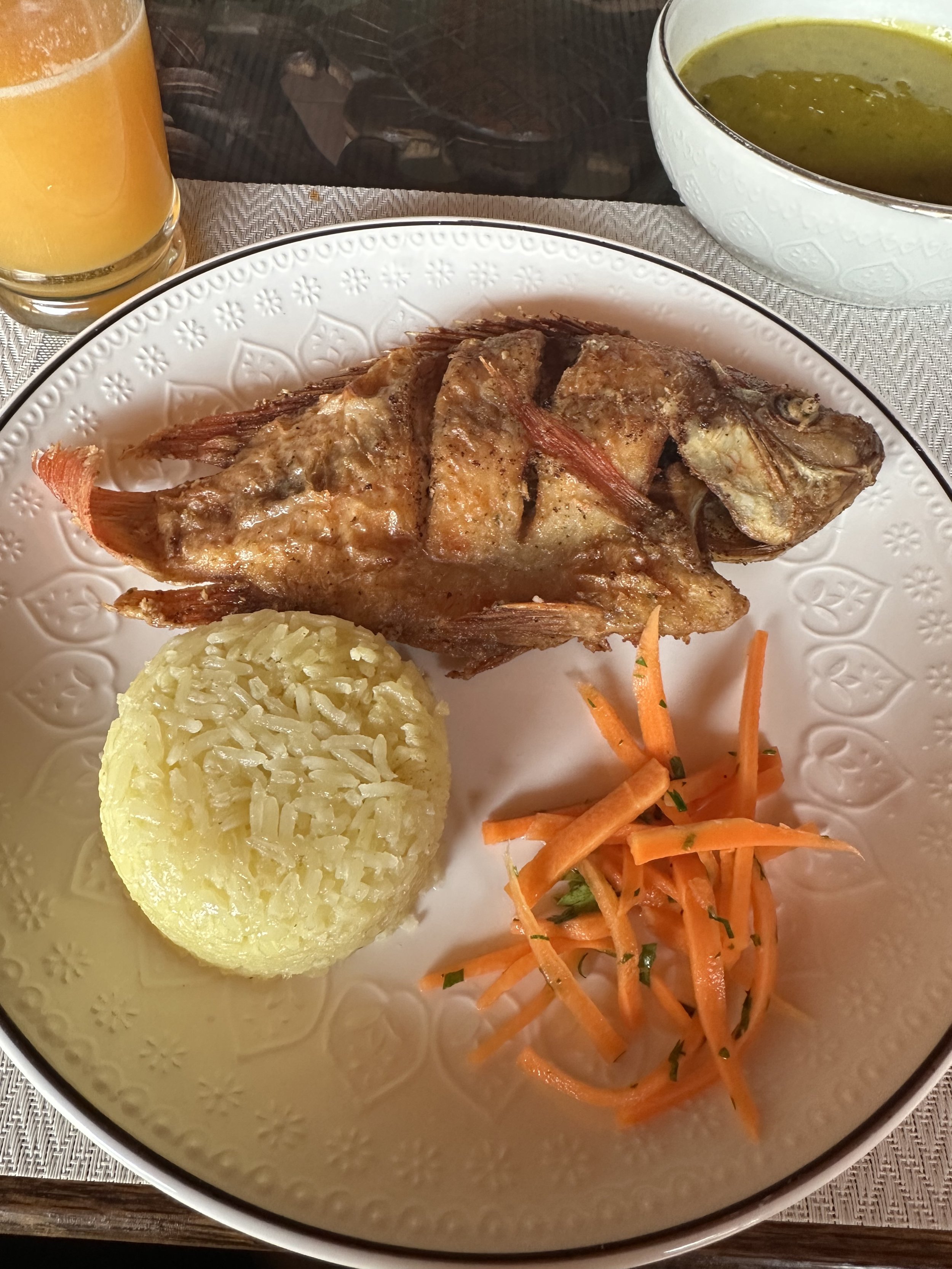
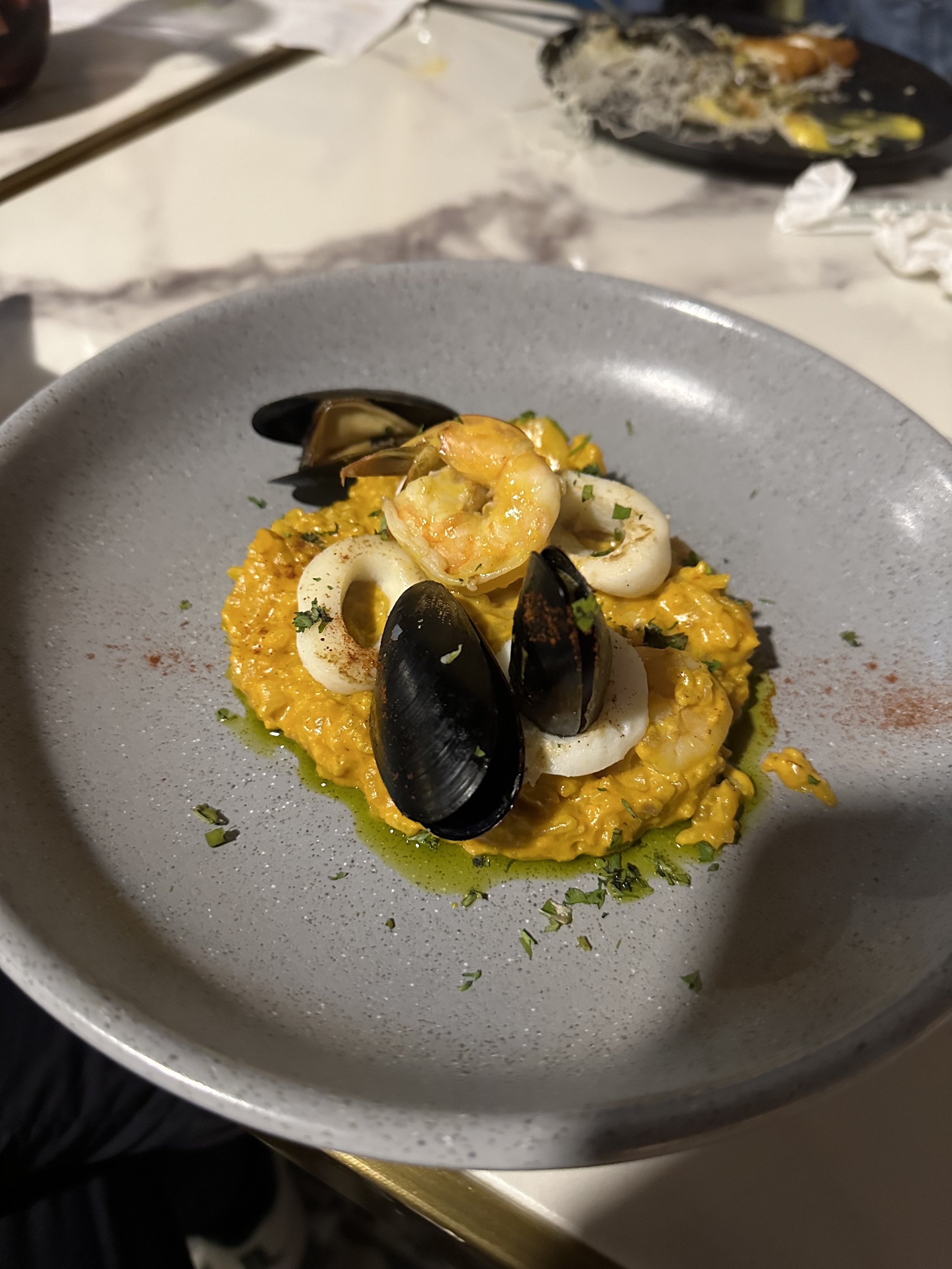

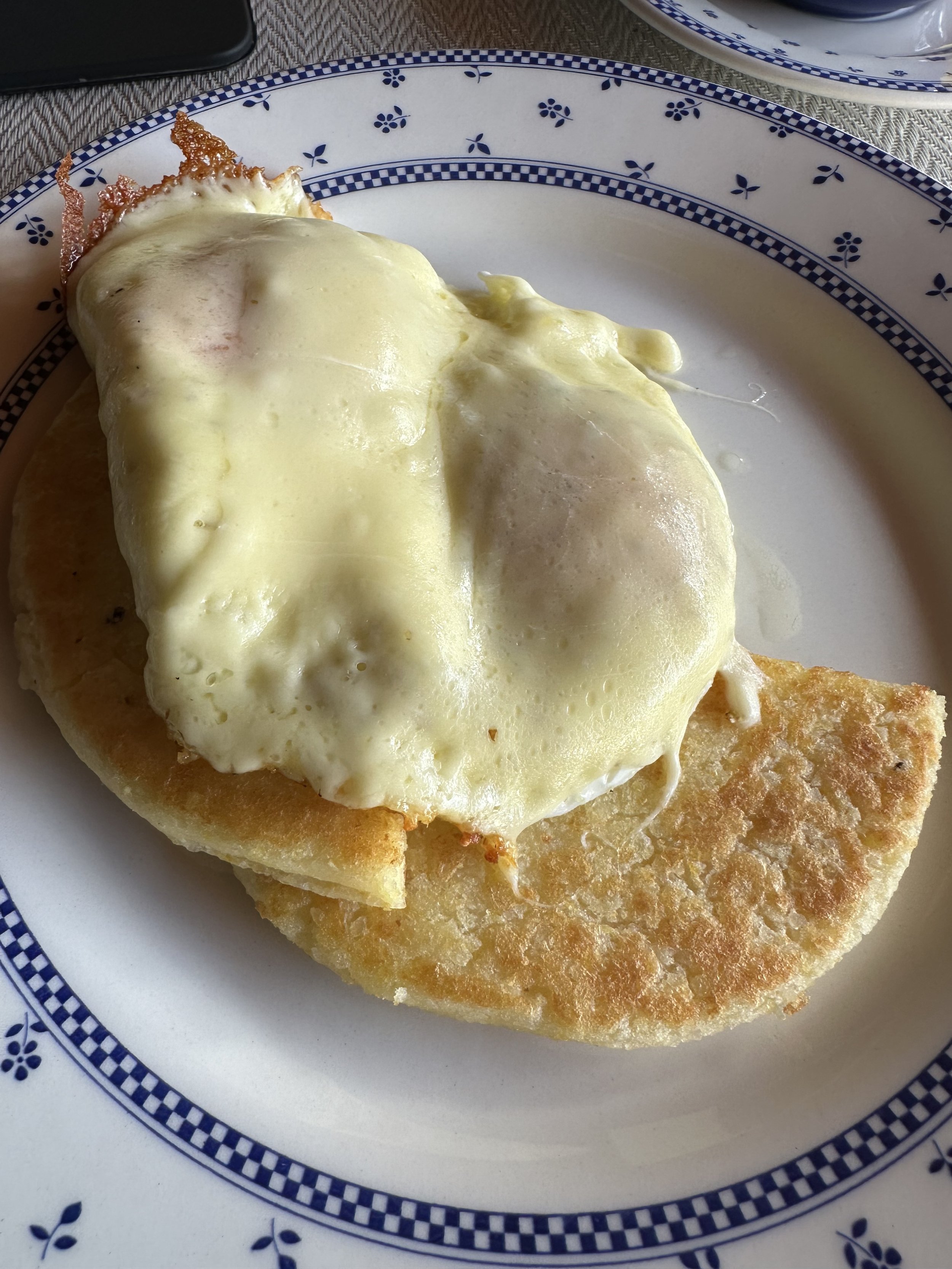
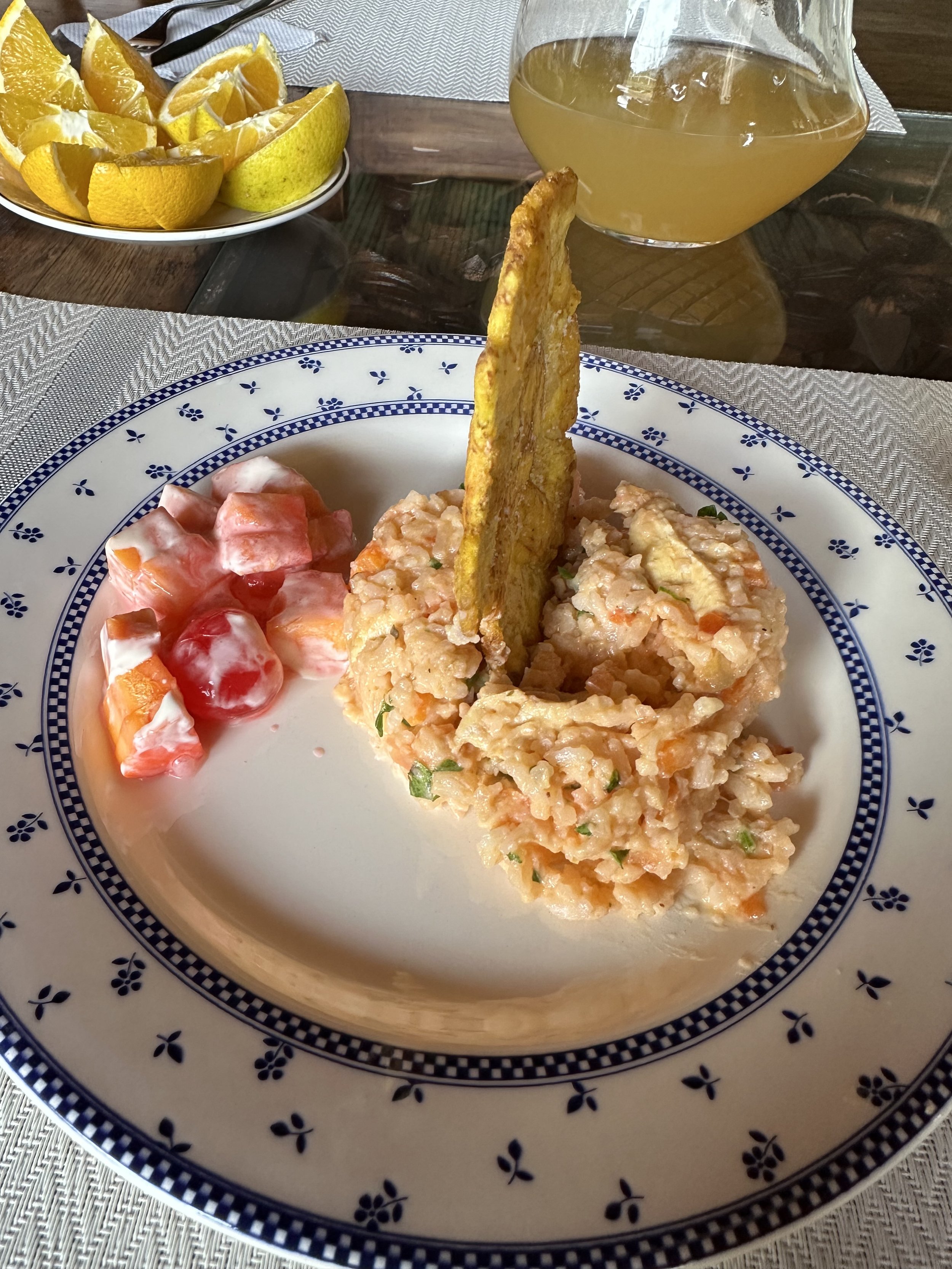
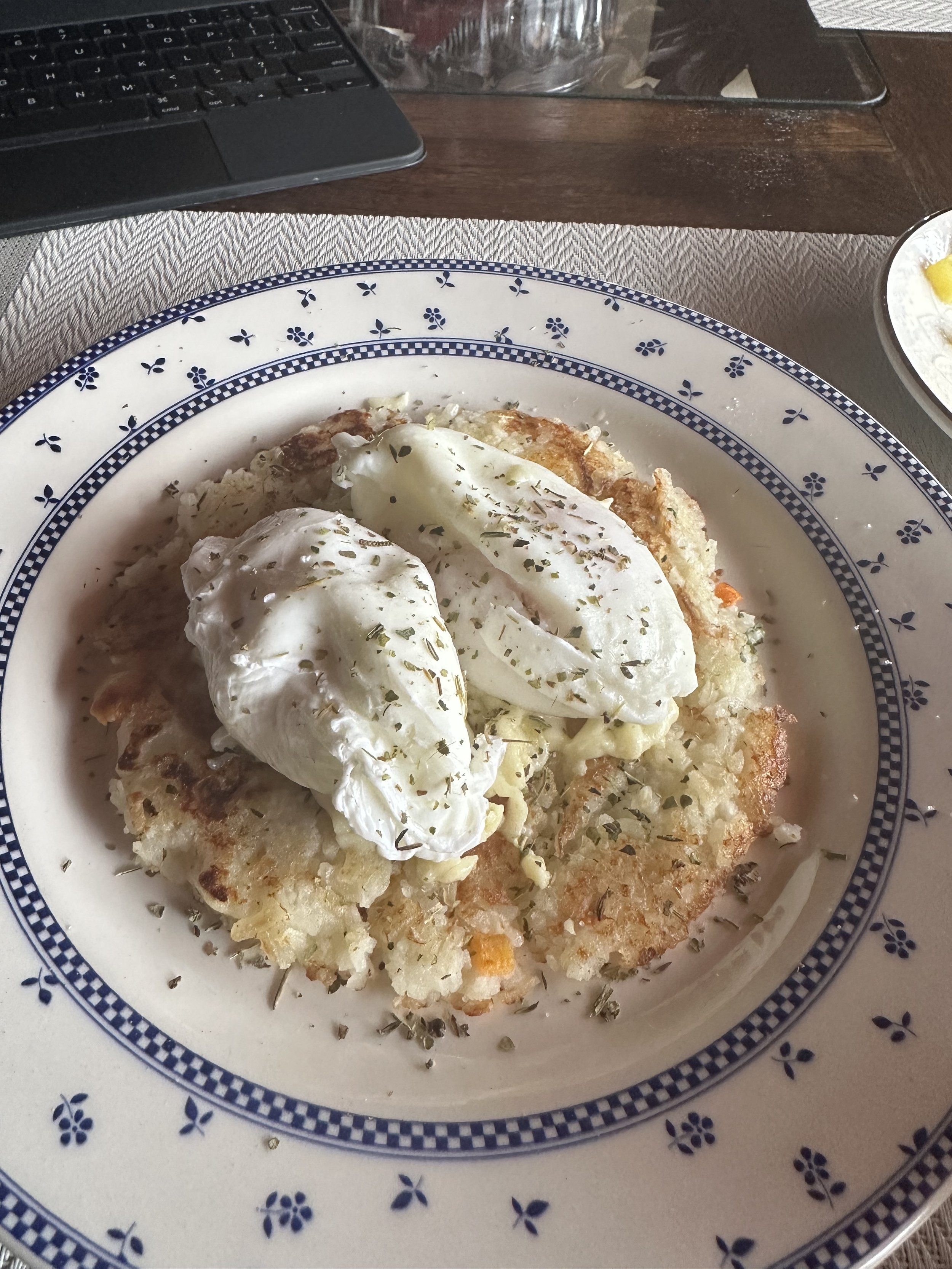
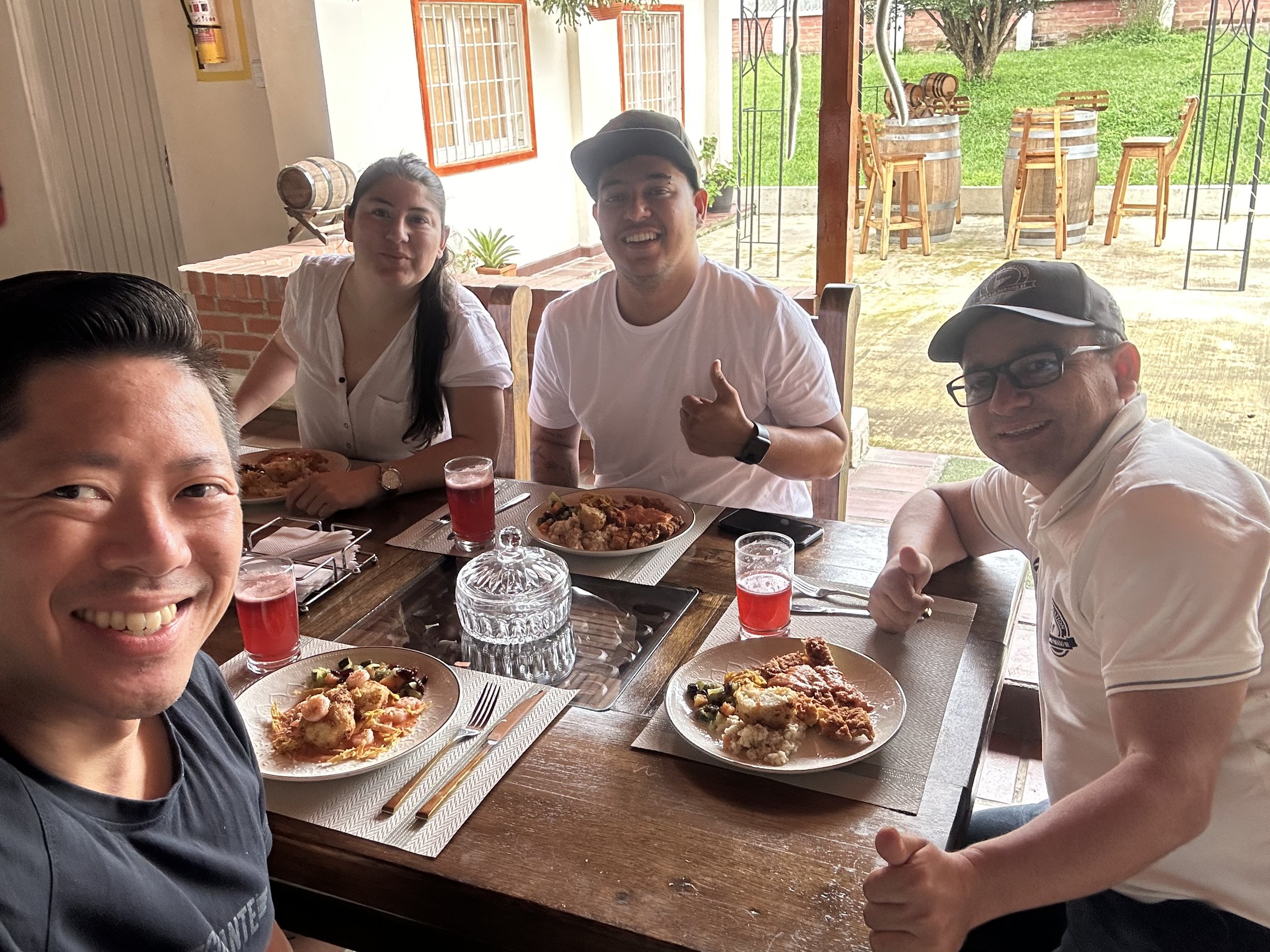
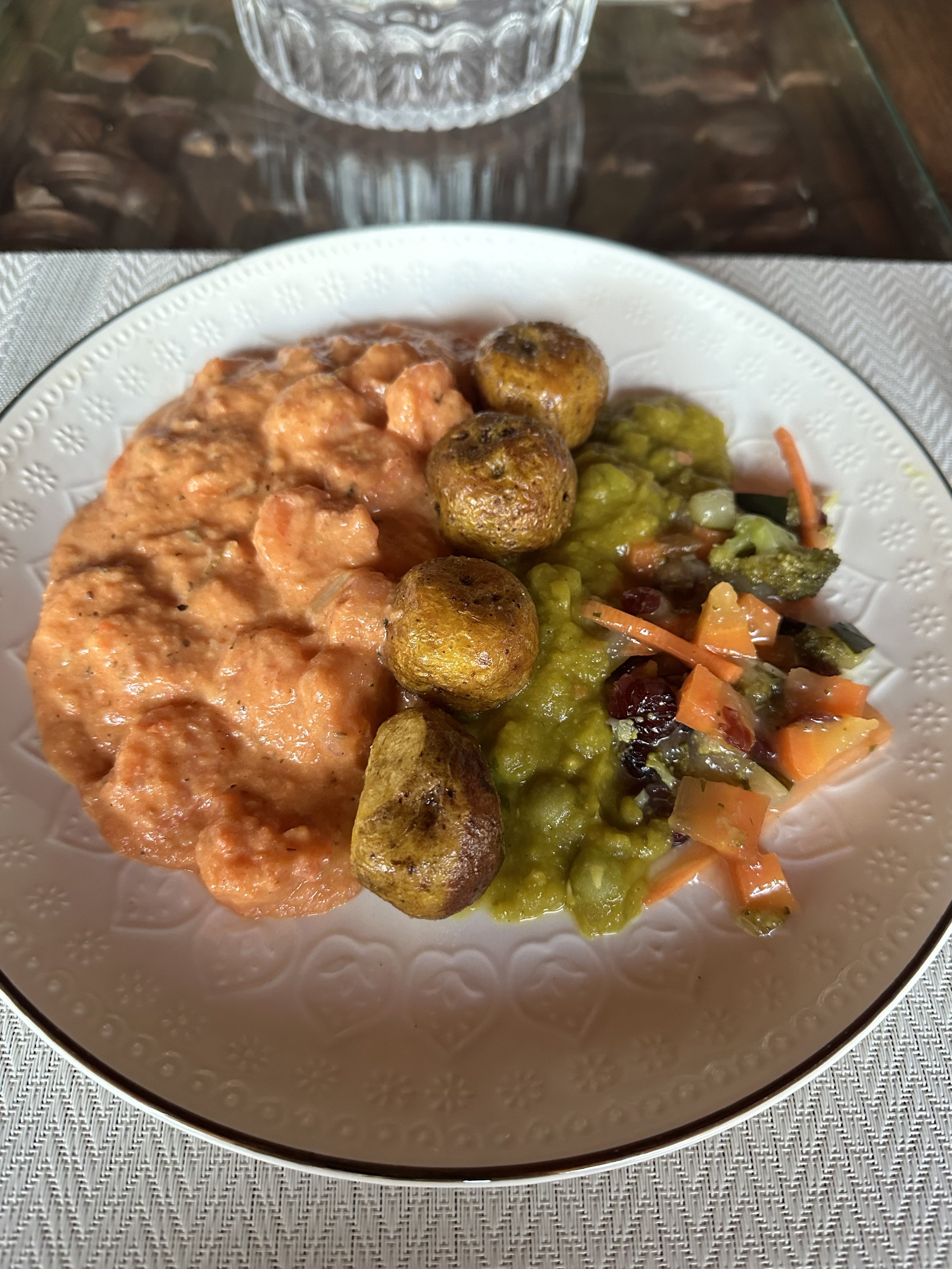
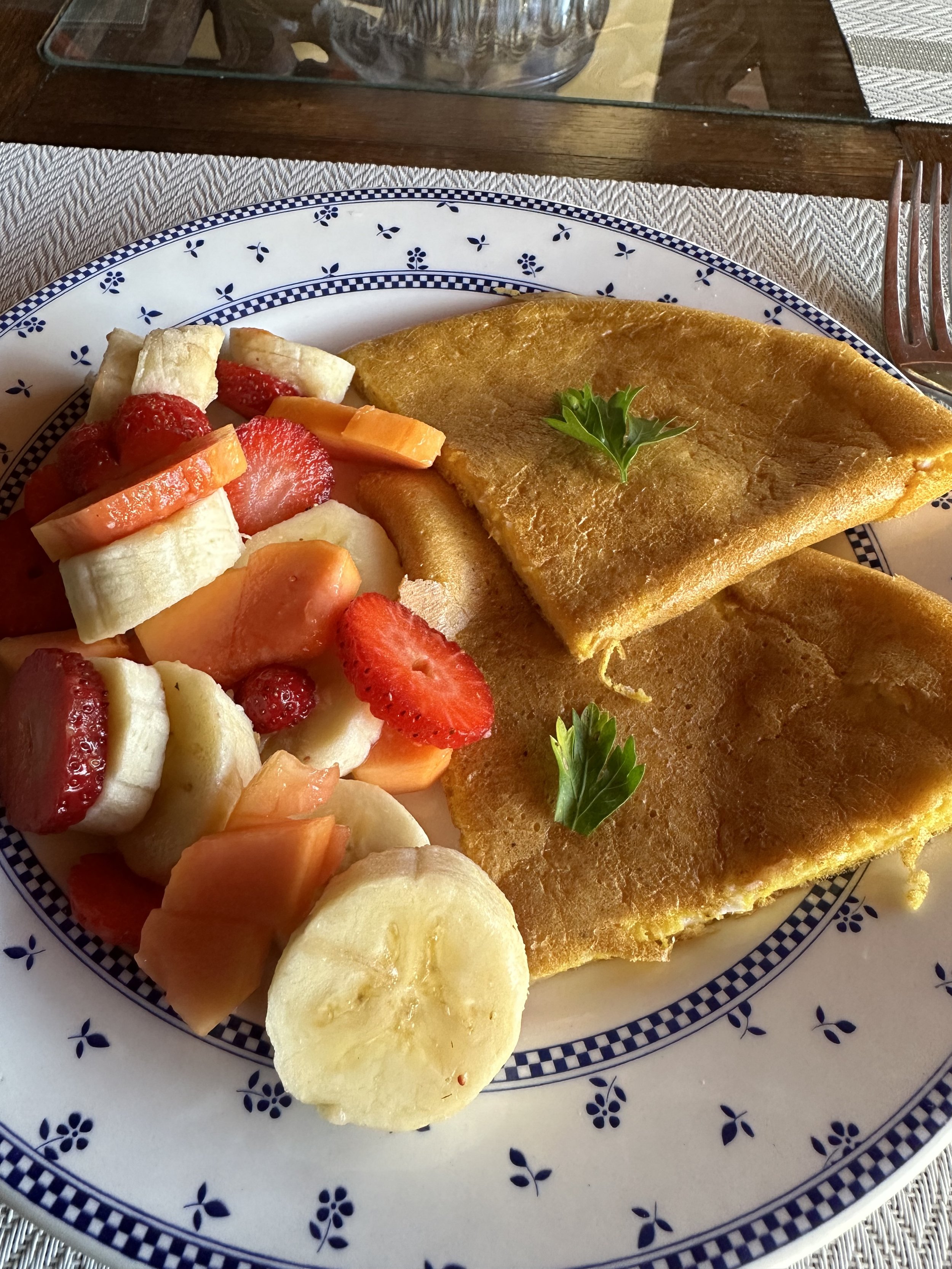
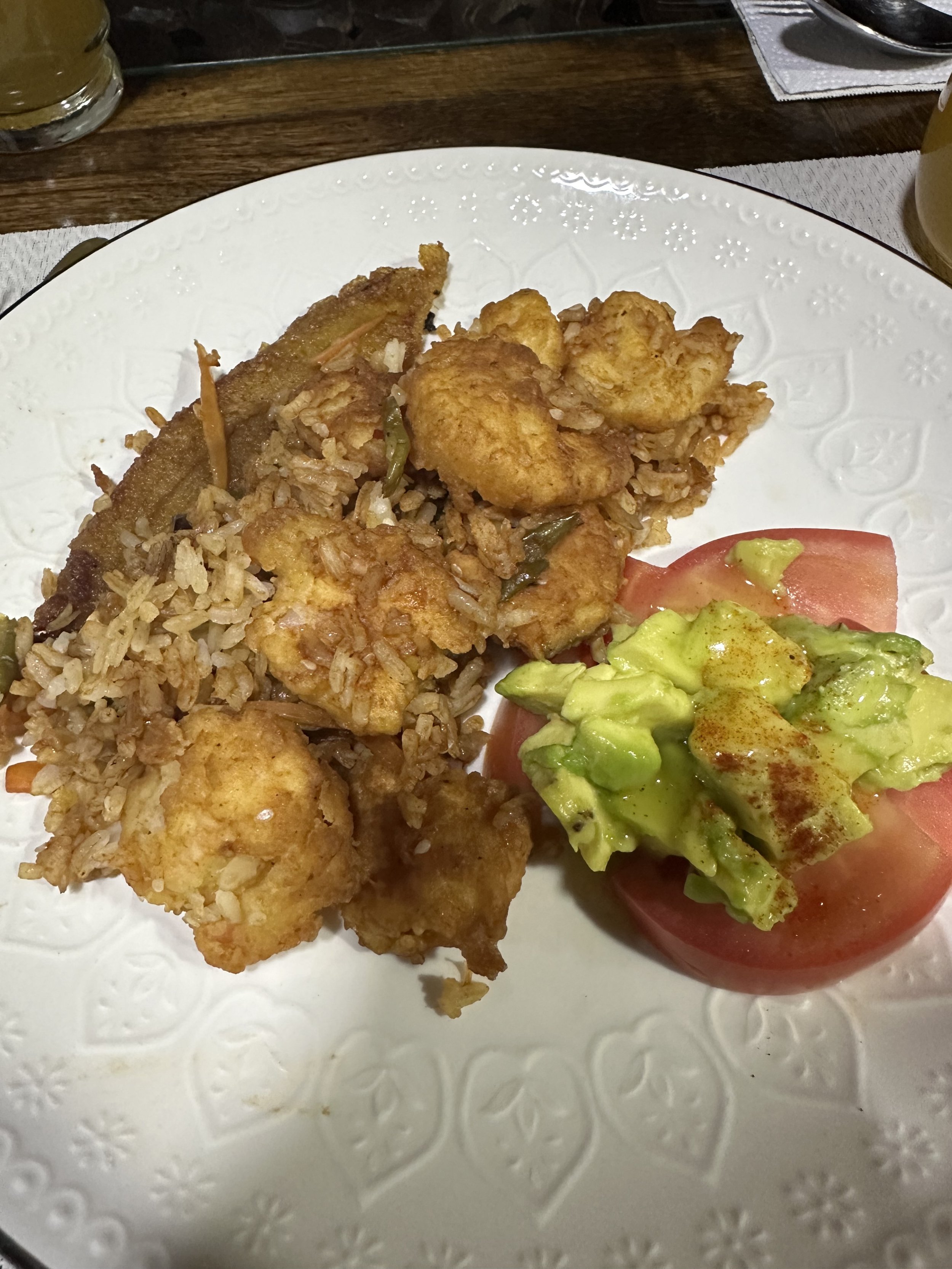
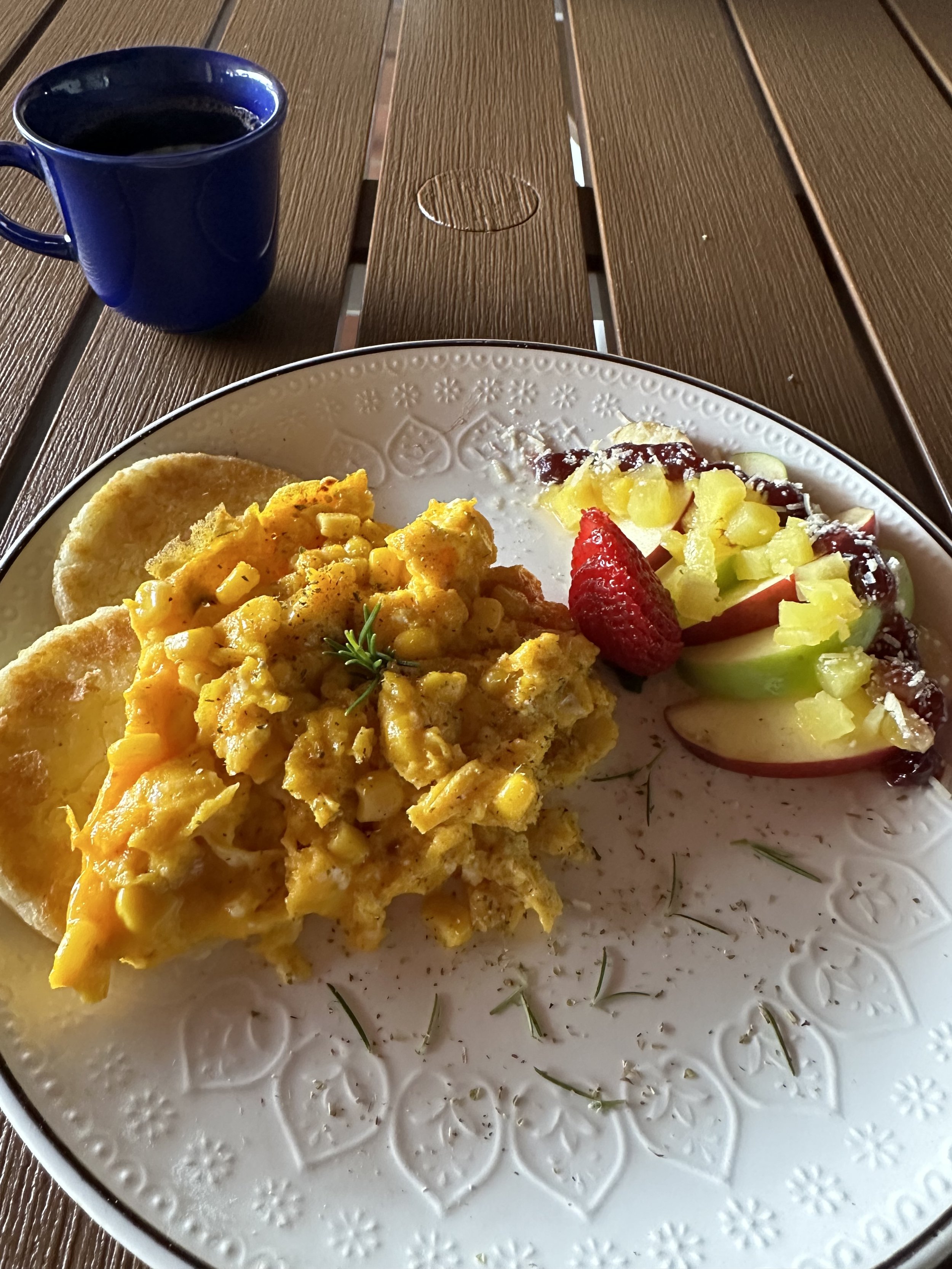
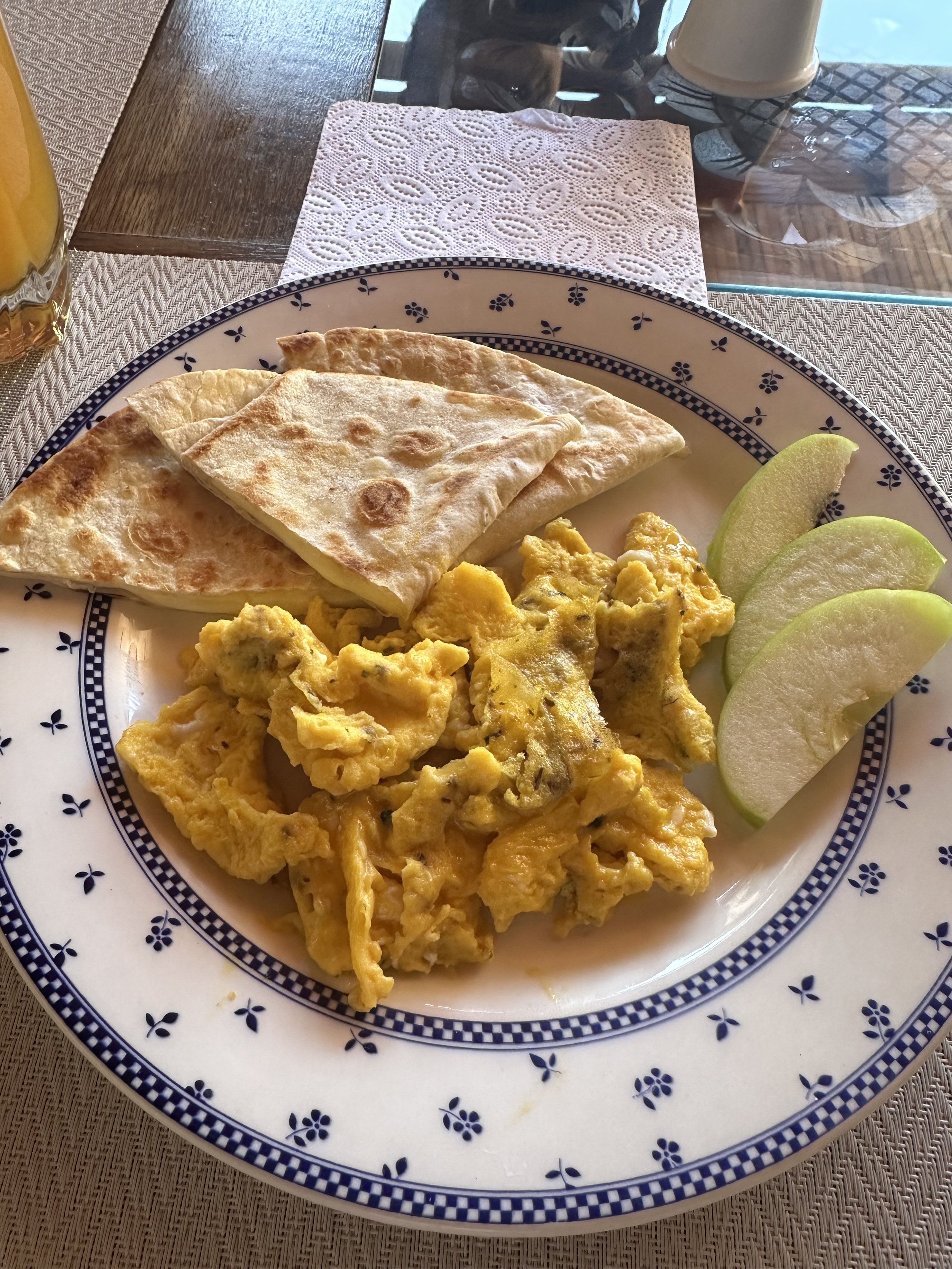
The combination of delicious food, warm hospitality, and the serenity of the farm made my stay at the farmhouse unforgettable. It truly felt like a home away from home, and the experience was as nourishing for the soul as it was for the palate.
Learning the Craft
Wilton’s farm is renowned for its Pink Bourbon varietal, a rare and prized coffee celebrated for its vibrant and complex flavors. But what truly sets Wilton’s coffee apart is his holistic approach to production. According to Wilton, producing great coffee requires understanding four key variables:
Suelo – The soil is where the nutrients and minerals come from, providing the foundation for healthy coffee plants.
Varietal/especie – The varietal or species determines the potential range of flavors in the coffee.
Clima – The climate dictates the harvest cycle. In Wilton’s region, the day starts sunny and shifts to intermittent sun, clouds, and rain by evening. This unique climate allows his farm to harvest coffee almost year-round.
Procesamiento – The processing stage is what magnifies and enhances the positive flavor compounds in the beans.
Wilton took me through each stage of his meticulous Advanced Multi-Stage Fermentation Process, and I actively participated. I helped manually pick the cherries, sort them by density, sanitize them using ozone and ultraviolet light, and place them into anaerobic bioreactors for controlled fermentation. The level of precision and care was unlike anything I had seen before.
He explained how every step, from washing the beans with hot and cold water to the ecological drying process, was designed to unlock the coffee’s full potential. This wasn’t just about producing good coffee—it was about creating an extraordinary sensory experience in every cup.
I’ll have to write more in a future blog post about Wilton’s Advanced Fermentation process, so be sure to subscribe so you don’t miss out on any of my upcoming posts!
The Yeasts and Bacteria
Wilton also arranged for Sara Milena Ortiz, a renowned Colombian microbiologist from Cali, to visit his laboratory and teach me how to grow and isolate the natural yeasts and bacteria from the coffee cherries. These microorganisms are crucial during the fermentation process, as they are more compatible with the local coffees and help enhance the volatile flavor compounds. By using strains native to the area, the fermentation process elevates the coffee’s unique characteristics, creating deeper, more complex flavors.
Wiltons invention: The Eco Dryer
One late evening, after a satisfying dinner, Wilton shared the story of how his coffee journey began. Coming from a poor family, he had always been curious about how everyday items worked. His curiosity extended from household appliances like radios, TVs, and microwaves to cars. This insatiable curiosity led him to become a self-taught repairman, earning a living as a young boy by fixing things for people in his town. This skill would prove invaluable later in his journey.
In his teenage years, Wilton worked as a coffee picker to put himself through school. One day, the farm’s de-pulper broke down, and with tons of cherries arriving, there was a sense of urgency. Wilton proposed to the farm manager that he be given a chance to fix the machine. His attempt was successful, and the next morning, when he showed up to pick coffee as usual, the farm manager stopped him and said, “Hey, where are you going? I want to offer you a new position as head of maintenance for the farm equipment.”
A few years later, Wilton became the go-to person in town for fixing all the coffee equipment. He was then hired to manage a farm for a large multinational Spanish company. During this time, he noticed a recurring issue—due to Colombia’s unpredictable climate and high humidity, the coffee was always at risk of mold. Wilton knew that this problem needed a solution, and that’s when he decided to invent the eco dryer.
Wilton and his invention the Eco-Dryer
He designed the dryer to be both efficient and eco-friendly, capable of gently and evenly drying coffee within 24 hours at 35°C. Initially, his plan was to turn this invention into a business, producing and selling the dryers. However, during the testing phase of the first batch of machines, he realized that the profits from selling the coffee they dried far outweighed the revenue from selling the dryers. This epiphany led Wilton to pivot from selling drying machines to becoming a coffee producer, using his eco dryers to add value and efficiency to his new business. This was when Granja Paraiso 92 was born.
This is truly an inspiring success story. Wilton’s journey exemplifies how coffee offers endless possibilities, and how keeping an open mind and the ability to adapt are key to success in the coffee industry. His story is a powerful reminder that curiosity, innovation and resilience can transform not just a business, but an entire life.
Tasting the Results
The real magic, of course, happens in the cup. In Wilton’s lab, we cupped coffees multiple times daily like a ritual. As he once said, “If I miss a cupping, I won’t be able to sleep well at night.” Many of the coffees we cupped were beyond anything I had ever experienced—true fruit bombs. Depending on the varietal and processing style, notes of florals, citrus, and tropical fruits like mango and passionfruit filled the air. The taste was a symphony of sweetness and acidity, with a creamy, velvety body. It was pure coffee bliss—a reminder of why I fell in love with his coffees in the first place, and the reason I knew I had to bring these extraordinary coffees back to the Philippines. I wanted our consumers to experience these complex flavors firsthand.
The real magic, of course, happens in the cup. We cupped lots of coffee at Wilton's Lab.
One of my favorites was the Pink Bourbon. According to Wilton, Pink Bourbon isn’t actually a bourbon, but rather an Ethiopian Landrace with pink cherries that local Colombian farmers simply named “Pink Bourbon” because of its color. It’s a practical way of giving something a name, I suppose.
The Pink Bourbon features an incredible aroma of passionfruit, pink guava, dark cherries, and Earl Grey. When warm, the coffee has notes of banana, passionfruit, strawberries, and even bubblegum. As it cools, the flavors transform into pink guava juice, peach, and cotton candy.
Another coffee I really enjoyed was the Sugar Cane Decaf. This coffee features an aroma of ginger, syrup, and cherries. When warm, it offers delightful notes of patchouli and ginger tea, creating a soothing and comforting profile. As it cools, the flavors shift to the sweetness of agave nectar, providing a smooth, clean finish. Despite being decaffeinated, this coffee didn’t lack complexity or depth, making it a standout in my tasting experience.
Dear reader, you really need to try these coffee—it’s something truly special. And since you’ve read this far into the blog, I know you’re a true coffee lover. Here’s a link to try these amazing coffee at thevault.ph.
Bringing It Back Home
As I prepared to leave Granja Paraiso92 and head to Bogotá to explore for a few days (an adventure for another blog post) before returning to Canada to spend more time with my dad, and eventually back home to the Philippines, I knew that my time at Granja Paraiso 92 had transformed me. Coffee is more than just a beverage—it’s a story, a journey, and a connection between people and places. Wilton’s dedication to pushing the boundaries of coffee production had given me a newfound appreciation for the craft, and I couldn’t wait to share these extraordinary beans with fellow coffee lovers back home.
I packed as much coffee as I could into my luggage—over 30kg! I paid for the excess baggage and, with my fingers crossed, hoped I wouldn’t run into any trouble with Canadian or Philippine customs.
As I continue my work in the coffee industry, I am deeply inspired by Wilton’s innovation and passion. I look forward to bringing a little piece of Colombia to every cup we brew at Henry & Sons and The Giving Cafe, reminding us all that great coffee is a journey worth taking. I can’t wait for the Philippine harvest season to start so I can apply the advanced techniques I learned from Wilton. In the meantime, we’ve already begun nurturing the soil of the farming communities Henry & Sons has adopted. Following Wilton’s teachings, we are working to replenish the soil with as many minerals as were taken out in the last harvest, ensuring a sustainable and thriving coffee future.
Final Thoughts
For any coffee lover, Colombia is a destination that can redefine how you experience your favorite drink. It’s a place where coffee culture runs deep, and while safety is always a consideration, you do need to be cautious wherever you go in the world, especially as a traveler. The love for coffee and the connections it fosters, building meaningful relationships and life-long friendships, makes all the difference. In Colombia, you’ll learn not only about their incredible love for coffee but also about the pride they take in their homegrown beans. The coffee in cafés is all Colombian—and it’s not cheap. Their farmers are not poor and are living comfortable lives; they are proud of the quality of their coffee, and rightly so.
It’s something I truly wish for the Philippines—for us to not only love our coffee but to be genuinely proud of it. Not just out of patriotism, but because our coffee has the quality and value that justifies its price. This is my dream and life’s mission for Philippine coffee, and it’s what drives me every day to keep pushing toward elevating our coffee to the place it truly deserves on the world stage.
When I first traveled to Colombia, I didn’t know anyone there. But when I left, I had gained a family—my Colombian brothers Wilton, Oscar, and Darwin, along with their families and incredible team. Writing this blog brings back strong emotions; I miss my time in Colombia, and I miss my friends.
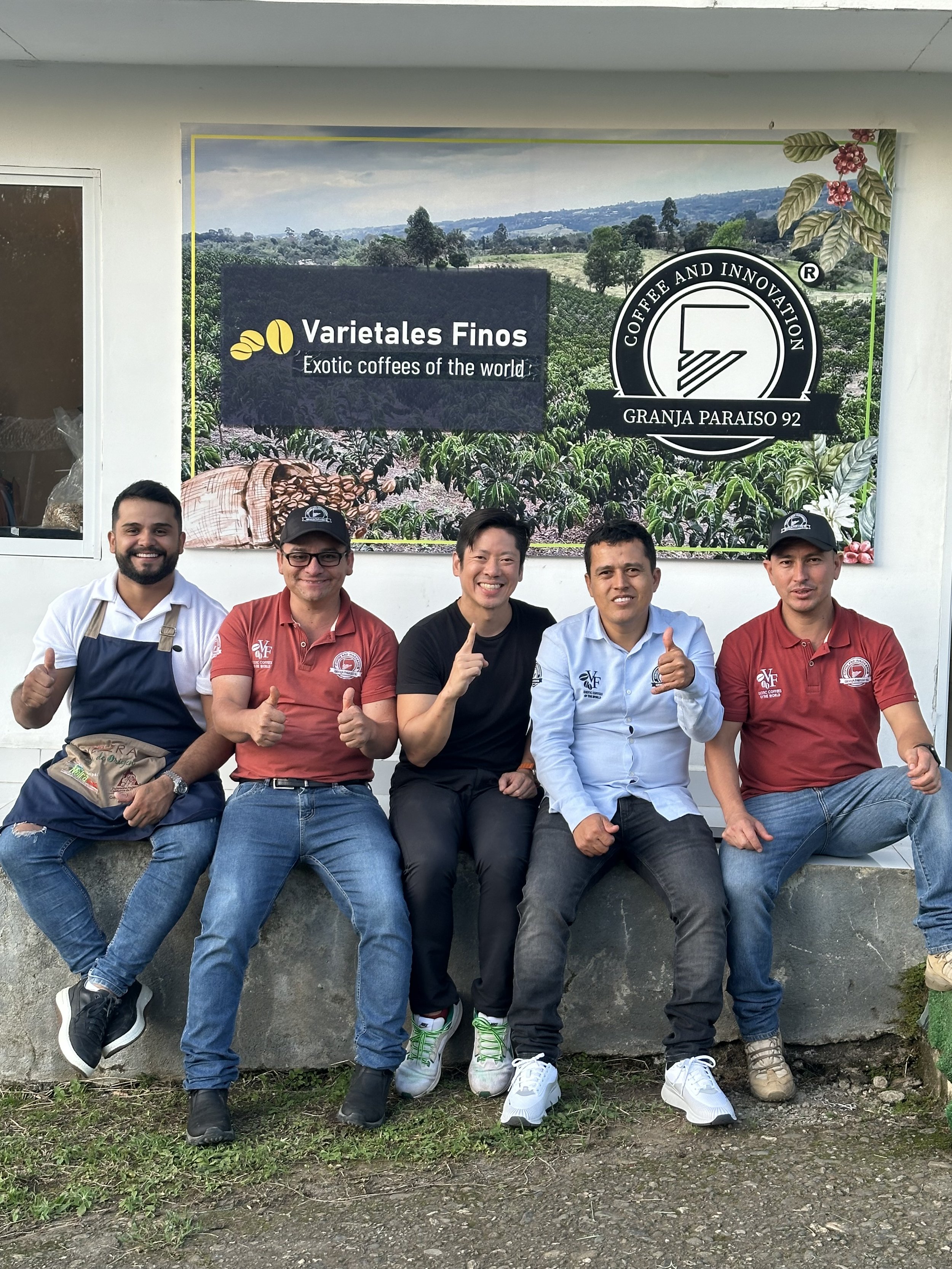
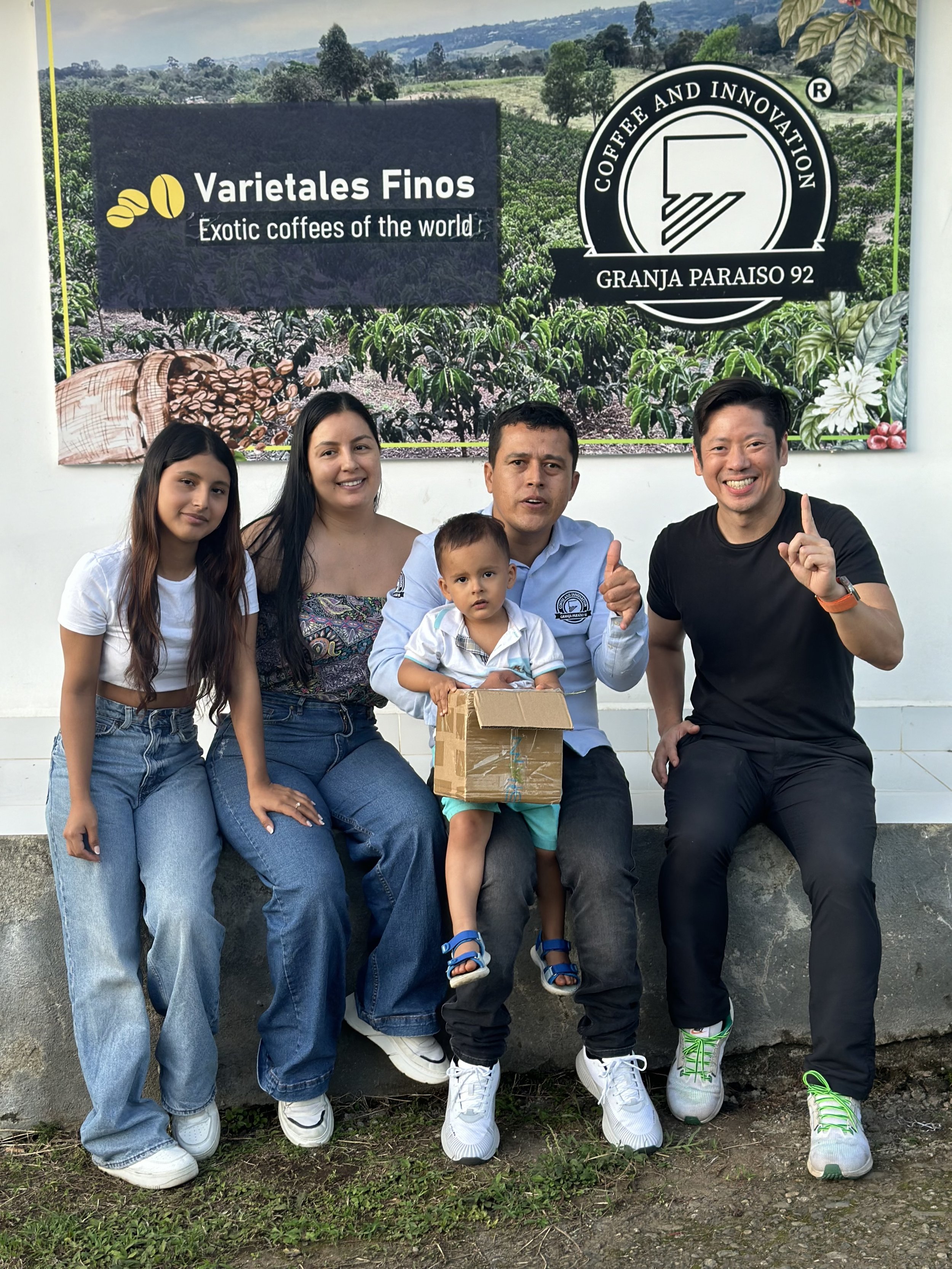
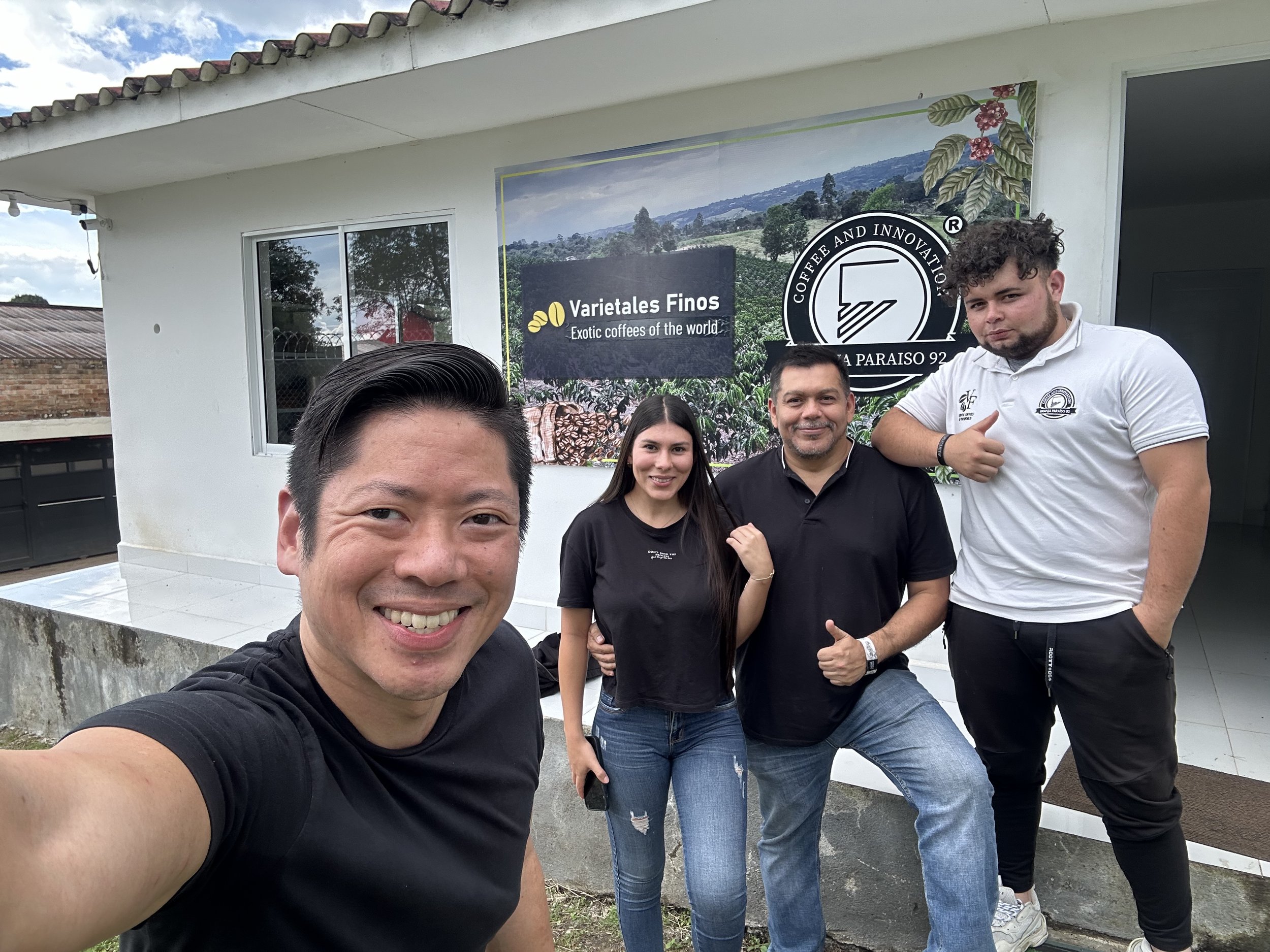

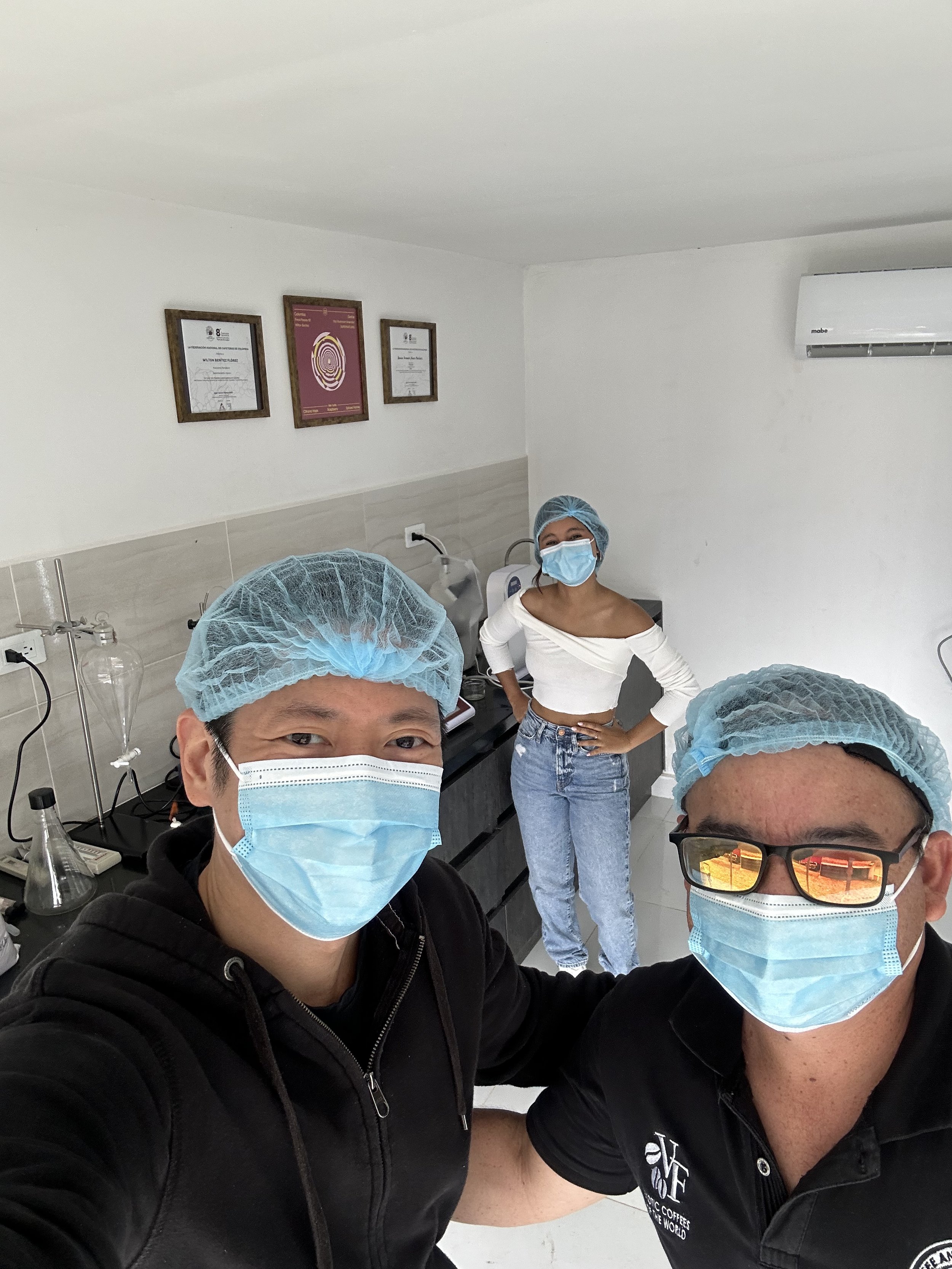
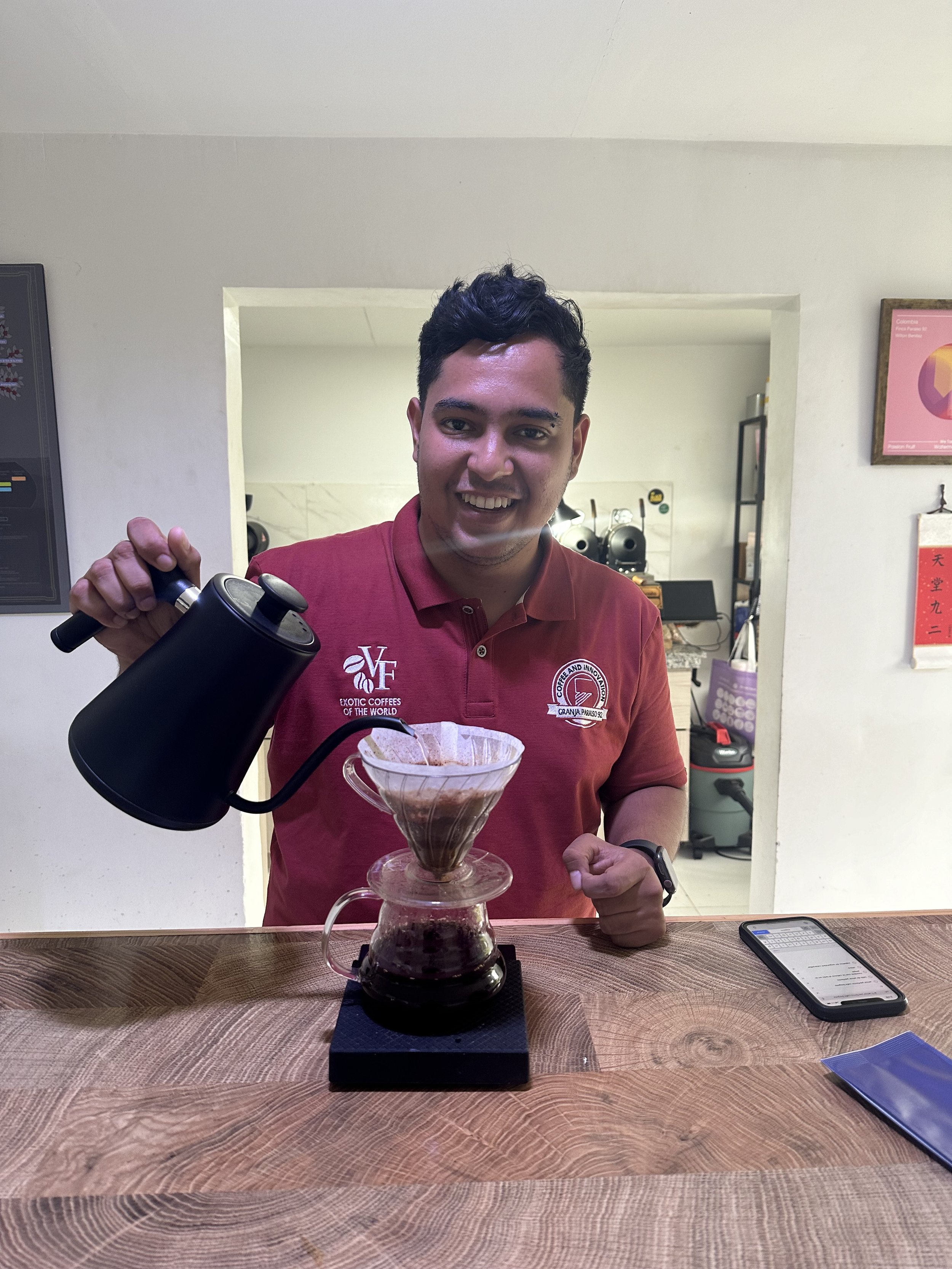
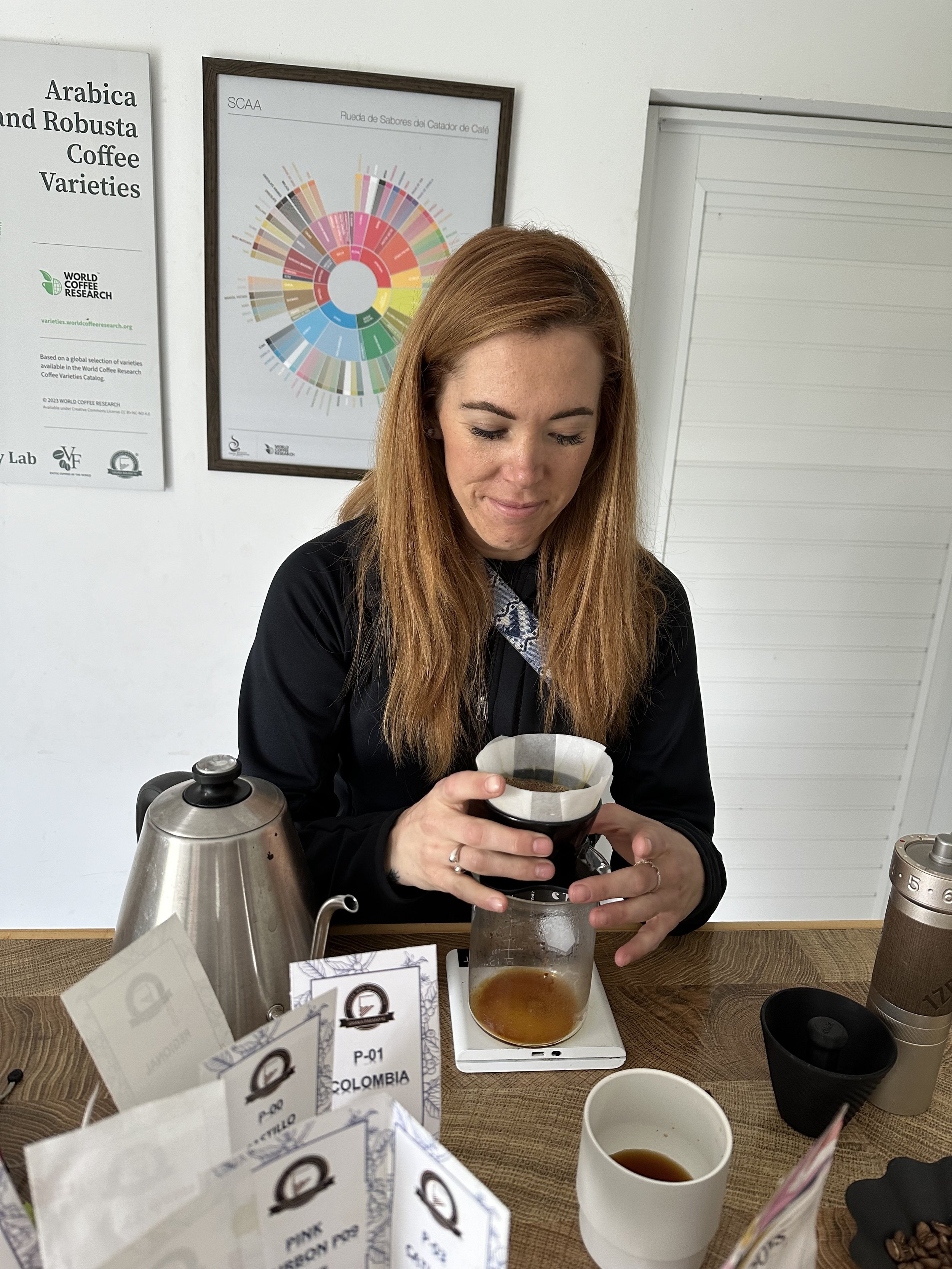
Whether it’s the vibrant flavors of Pink Bourbon or the innovative processes that make each cup unique, there’s an entire world of coffee to explore—and it’s just waiting for you in the coffee lover’s wonderland of Colombia.
Dear Coffee friend, If you enjoyed this journey, please like and share this post with your fellow coffee lovers. And don’t miss out on the chance to try these exceptional coffees for yourself. Visit thevault.ph to buy beans or stop by The Giving Café for a cup of coffee and experience this magical adventure in every sip!
Photo credits to Wilton, Oscar and Darwin and their incredible team for capturing these unforgettable moments on the farm.












